‘Patience Doesn’t Feel Patient’ by Sarah Sprague – Friends of L.R.Knost Rock the Guest Posts while She Battles Cancer
 They say that bravery doesn’t feel brave or fearless because if you’re not afraid it is something other than bravery. I guess that patience is one of those things, as well.
They say that bravery doesn’t feel brave or fearless because if you’re not afraid it is something other than bravery. I guess that patience is one of those things, as well.
From the outside it looks like calm and peace but from the inside it can feel more like the tested limits of self control.
Learning to be patient is learning how to separate what we feel from how we act. It is learning to accept our feelings while choosing to not act on them. It is learning to say to ourselves:
I can be angry without acting angry.
I can be impatient without acting impatient.
I can be upset without acting upset.
I can be hurt without acting hurt.
I can feel without acting on my feelings.
I can feel without reacting to what I feel.
When I choose to act patient I slow down. I speak more slowly than I normally would. I lower my volume and I pace my words so that they won’t rush together in an explosion of words that no one will understand and that will act as a precursor to yelling. There’s a rhythm to this patience that doesn’t feel patient. A slow rhythm. A careful spacing of words. A slowness to how my body moves as I make sure that no part of me will gain a momentum that will feel like hitting or grabbing or being anything other than soft and gentle.
- When my toddler hits again.
- When my seven year old is upset that he doesn’t understand his homework and is avoiding doing it instead of asking questions.
- When my four year old has snuck his safety scissors into the other room so that he can cut apart a travel pillow to see what is inside, and the entire world feels like it’s covered with tiny Styrofoam pellets.
- When the two-and-a-half gallon water dispenser has been opened by someone curious and it has flooded the kitchen.
- When my three year old fed the fish every container of fish food all at once and the twenty nine gallon aquarium needed to have all of its water cleaned and replaced at bedtime.
I slow down to try and run in quicksand. I go slow-motion like walking through an empty room with a strobe light. I try and move my body through a thickened air. And I try to slow every word down so that it comes with a peace and gentleness that doesn’t show any of the frustration that I feel.
I grasp at all of the excuses that my child doesn’t yet have the words to offer. I try and see what positive or curious motivations they might have, or what stresses may be driving them to this place. I try to wrap every part of my heart and brain around empathy and love.
He sits at the table fiddling with his pencil. Nothing has been done on his worksheet, not even his name. He has gotten up to do half a dozen things. I have to make dinner. I have to sweep the floors. I have to do all the things on my to-do list.
“Issac.. Can you please do your homework?” I ask.
“Okay.” He says. And he picks up his pencil and stares off into space.
I am feeling anything but patient. My daughter has not napped today and she claws at my knees to be picked up, asks to draw on his homework with his pencil, and wants no substitutes for this thing that she cannot have. So now I’m being screamed at. I tap at his worksheet and he tells me to help Keenie calm down. So I walk away to find her some playdoh so that we can work on his homework together.
I come back. Nothing’s been done.
Breathe. Slow down. Find the reasons. Seven hour days at school with fifteen minute recesses. Not nearly enough time to decompress after school. He’s having a hard time reconnecting to what he’s trying to do.
I move slowly, lay my hand on his shoulder as softly and gently as I can. On contact my own tense muscles relax. This is my child. My son. He is seven and I love him dearly.
I plant a kiss on his head, and sniff his hair the way I used to when he was tiny, when he was a toddler. It smells just like him.
My other hand comes down to his worksheet. I’m standing behind him, my body enveloping his. Supporting and soft and patient, not angry and looming. My finger pointing to where he needs to write his name. Slow voice. Quiet voice. “Isaac, what does this say?” I ask. Trying to get him to look at the worksheet long enough to begin writing.
He writes his name.
“Now what’s the next question?” I ask. Soft. Slow. Clear. Strong.
He doesn’t answer. He doesn’t move.
I tap the paper. His eyes move to where I’m pointing.
“Can you read this for me?” I ask. He reads the question out loud.
“Do you understand what the question is asking?” I ask.
The dam breaks. He doesn’t understand. He screeches frustration and tells me that he didn’t understand in class.
My frustration is gone. I understand now. We go over what he can do if he doesn’t understand something in class. I ask him if he wants me to help him figure out how he can answer the questions or if he wants me to write a note on the top so that his teachers will know he needs more help with this topic. He chooses to have me try and show him how to work out the answers.
I sit down next to him. He’s fully engaged now.
Patience did not feel patient at first. But then. At the end of it, when I’ve responded well? When the crisis is past. When the messes have been cleaned up? When I’ve helped my seven year old slow down to re-focus and understand what he refuses to understand? When I’ve had self control and when I have acted patient?
That is when patience feels patient. When we’re past the thing that has me pulling my hair out. When we’re past the thing that has me wanting to move faster and raise my voice. When we’re past the thing that has me wanting to throw a tantrum all of my own.
That.. Is when I feel patient. Radiant. Powerful.
And it takes my breath away.
Sarah Sprague, creator of the ‘Wait-It-Out’ gentle sleep learning method (WIO), writes at Nurshable: Joy in Gentle Parenting and can be found on Facebook at Nurshable.
Related posts:
My Cancer Story, Part 1: The Diagnosis
September 26, 2014 | Categories: attachment parenting, baby led weaning, babywearing, breastfeeding, communication, cosleeping, gentle parenting, newborn, nursing, positive parenting, sleep issues, soothing, toddler | Tags: gentle parenting, infant, newborn, sleep issues, toddler, wait it out | 3 Comments »  Award-winnning author, L.R.Knost, is the founder and director of the children's rights advocacy and family consulting group, Little Hearts/Gentle Parenting Resources, and Editor-in-Chief of Holistic Parenting Magazine. Books by L.R.Knost include Whispers Through Time: Communication Through the Ages and Stages of Childhood ; Two Thousand Kisses a Day: Gentle Parenting Through the Ages and Stages ; The Gentle Parent: Positive, Practical, Effective Discipline ; and Jesus, the Gentle Parent: Gentle Christian Parenting the first four books in the Little Hearts Handbook gentle parenting series, and children’s picture books Petey’s Listening Ears and the soon-to-be-released Grumpykins series.
Award-winnning author, L.R.Knost, is the founder and director of the children's rights advocacy and family consulting group, Little Hearts/Gentle Parenting Resources, and Editor-in-Chief of Holistic Parenting Magazine. Books by L.R.Knost include Whispers Through Time: Communication Through the Ages and Stages of Childhood ; Two Thousand Kisses a Day: Gentle Parenting Through the Ages and Stages ; The Gentle Parent: Positive, Practical, Effective Discipline ; and Jesus, the Gentle Parent: Gentle Christian Parenting the first four books in the Little Hearts Handbook gentle parenting series, and children’s picture books Petey’s Listening Ears and the soon-to-be-released Grumpykins series.
Breastfeeding: Manna from God
[Excerpt reprinted from Jesus, the Gentle Parent: Gentle Christian Parenting by L.R.Knost. Two Thousand Kisses a Day: Gentle Parenting Through the Ages and Stages; Whispers Through Time: Communication Through the Ages and Stages of Childhood; and The Gentle Parent: Positive, Practical, Effective Discipline by L.R.Knost also available on Amazon and through other major retailers.]
~~~~~~~~~~~~~~
“But we proved to be gentle among you, as a nursing mother tenderly cares for her own children.”
1 Thessalonians 2:7
 Jesus’ mother, Mary, didn’t practice attachment parenting when raising little Jesus. The Bible does tell us that she breastfed Jesus, “Blessed is the mother who gave you birth and nursed you.” (Luke 11:27). The culture of the time tells us that she likely coslept with him in the small, one or two room house typical of that period and that she wore him close to her heart in the daylight hours in a wrap to keep him safe from the snakes and scorpions and other dangers that populated the region. So it is certain that she was a breastfeeding mama and almost certain that she was a cosleeping and babywearing mama.
Jesus’ mother, Mary, didn’t practice attachment parenting when raising little Jesus. The Bible does tell us that she breastfed Jesus, “Blessed is the mother who gave you birth and nursed you.” (Luke 11:27). The culture of the time tells us that she likely coslept with him in the small, one or two room house typical of that period and that she wore him close to her heart in the daylight hours in a wrap to keep him safe from the snakes and scorpions and other dangers that populated the region. So it is certain that she was a breastfeeding mama and almost certain that she was a cosleeping and babywearing mama.
But Mary didn’t practice attachment parenting as she was growing a tiny Savior. She simply parented Jesus in the naturally instinctive way that mothers have mothered their little ones since time began. Attachment parenting is merely a term coined much later to tie these natural parenting choices and others in with the modern research of psychologists like John Bowlby who found that the healthiest emotional and relational adults tended to have strong early attachments with a parent or primary caregiver.
The Bible reinforces those research findings by not just referring to breastfeeding as providing life-sustaining nutrition, but also as a source of comfort and connection, “For you will nurse and be satisfied at her comforting breasts.” (Isaiah 66:11)
God’s biological design for breastfeeding weaves a developing infant’s needs with a mother’s needs into a delicately synchronized dance, and even daddies get in on the dance! There is an inbuilt, biochemical response to the birth of a baby that affects both sexes in similar, though somewhat different ways. As the birth of a new baby nears, a mother’s oxytocin level, known as the ‘love hormone’ because of its ability to create warm feelings of safety and attachment, increases as part of the preparation for bringing a new life into the world and sustaining that life at her breast. Daddies also experience a rise in oxytocin, as well as an increase in estrogen, which results in their brains being pre-wired to love and protect their mate and offspring. Then, after birth and throughout the breastfeeding relationship, oxytocin levels in mamas and daddies remain elevated, rising and falling in rhythmic peaks and valleys in response to a baby’s ever-changing needs. This is no accident of nature. This is a beautiful biological design.
This lovely and perfect design also reveals itself in the balance of nutrients present in breastmilk. Breastmilk has the perfect composition of calories, nutrients, fats, and other components to ensure the optimal development of a growing infant. The composition of breastmilk shifts to accommodate growth spurts, sicknesses, and other needs throughout a mother and child’s nursing relationship. Interestingly, the ratios of each of the components change throughout the day to offer the most energy during the daylight hours and the highest concentrations of sleep-inducing nucleotides during nighttime feeding, so if a mama is pumping and storing breastmilk, it’s important to label the time of day the milk was pumped to avoid giving the more stimulating daytime milk at night!
Beyond the nutritional and bonding benefits of breastfeeding, there are also amazing health benefits to both mama and baby:
A reduction in the risk of SIDS, asthma, childhood leukemia, diabetes, gastroenteritis, otitis media (ear infections), LRTIs (pneumonia, bronchitis, etc), necrotizing enterocolitis, and obesity are just some of the protective benefits for babies. For mothers, breastfeeding has been correlated with a significant decrease in the risk of diseases such as breast cancer, ovarian cancer, diabetes, and heart disease to name just a few.
Additionally, the Journal of the American Academy of Pediatrics released a study in April of 2010 that concluded, “The United States incurs $13 billion in excess costs annually and suffers 911 preventable deaths per year because our breastfeeding rates fall far below medical recommendations.” Those numbers are only based on breastfeeding benefits for the first six months of life. The World Health Organization, American Academy of Pediatrics, Centers for Disease Control, and others recommend breastfeeding for the first two years of a child’s life. Imagine the tally if the researchers had looked at the lives lost and billions of dollars spent unnecessarily in a two year breastfeeding scenario instead of a six month scenario. (Two Thousand Kisses a Day: Gentle Parenting Through the Ages and Stages)
Some stumbling blocks in the breastfeeding relationship that mamas may encounter include the modern societal view of breasts as solely sexual objects which often leads those in public places, including many churches, to shame mothers into hiding in restrooms or vehicles or at the very least using covers that make breastfeeding far more difficult and clumsy than it needs to be. Biblically speaking, breasts are referred to half as often in reference to sexual relationships as they are in reference to the God-designed breastfeeding relationship between mothers and their little ones. Again, that is no accident!
Breastfeeding is not shameful and should not be hidden. As one of our current world leaders, Pope Francis, said during a 2014 baptism ceremony at the historic Sistine Chapel,
“Today the choir will sing, but the most beautiful choir of all is the choir of the infants who will make a noise. Some will cry because they are not comfortable or because they are hungry,” Francis said, according to Reuters. “If they are hungry, mothers, feed them, without thinking twice. Because they are the most important people here.”
He didn’t tell them to leave or to cover up or to make their babies wait. He tenderly told the young mothers to feed their babies when they’re hungry. End of story.
Another stumbling block to a healthy, full-term breastfeeding relationship is the increasingly prevalent diagnosis of low milk supply:
Even though mothers’ bodies are capable of miraculously growing a human being for nine months and bringing that precious new life into the world, those same life-giving bodies seem to be failing in ever-increasing numbers to provide life-giving nutrition to those precious babies because of issues with low milk supply.
Why is this happening? For some, it is certainly just pediatricians using formula-fed babies’ growth charts instead of breastfed babies’ charts or family and friends who believe that all babies should be chubby and content that lead new mothers to believe they have low supply, but there does appear to be an increasing number of babies legitimately labeled as failure-to-thrive with low milk supply determined to be the cause. (Two Thousand Kisses a Day: Gentle Parenting Through the Ages and Stages)
Often the low milk supply is caused by forcing babies to sleep alone and training them to sleep through the night. The fact is that babies aren’t biologically designed to sleep through the night. They are, though, biologically programmed to crave closeness with their mothers, and their proximity to and access to the breast throughout the night stimulates ongoing production of breastmilk, keeping up the mother’s supply naturally.As a simple matter of survival, it makes biological sense that God would build into babies a need to be near their primary source of safety, nutrition, and comfort:
Babies biologically should not sleep through the night. Not only is the deep sleep required to sleep through the night actually a recognized factor in SIDS (Sudden Infant Death Syndrome), but babies who sleep through the night are also not nursing to stimulate breastmilk production, thus their mother’s milk may begin to dry up. Clearly, that’s not a healthy biological design. (Two Thousand Kisses a Day: Gentle Parenting Through the Ages and Stages)
The bottom line is that breastfeeding is a biological norm created by God to meet a baby’s needs in the healthiest and most convenient way. That said, there are certainly times when a mother can’t breastfeed due to a medical condition, life circumstances, adoption, or other factors. In those cases mamas can still achieve a healthy attachment and strong, loving relationship and even boost their oxytocin ‘love hormone’ levels by holding their little ones close to their hearts during feeding, making eye contact and exchanging smiles and coos and giggles, kissing and nuzzling their babies’ fuzzy little heads, keeping their little ones close during the day in a baby wrap or sling, taking time out for a few periods of ‘kangaroo care’ each day, and meeting nighttime needs quickly, gently, and consistently. (end excerpt)
Related posts:
Ten Steps to Surviving the First Three Months with a Newborn
Love in the Time of Cosleeping
300+ Nicknames for Your Babykins…Doodlebug…Snugglebunny…
Babywearing Basics Resource Guide
Breastfeeding, Babywearing, and Bouncing Back into Shape after Baby
Jesus, the Gentle Parent: Gentle Christian Parenting
Tattered Tapestries: Weaving Trust Through the Chaos
Fear Doesn’t Lead to Faith: Becoming Your Child’s Safe Place
Where Did You Learn Love, Child?
Spare the Rod: The Heart of the Matter
Gentle Journeys: A Book Club for a New Generation
May 22, 2014 | Categories: attachment parenting, babywearing, Bible, birth, breastfeeding, cosleeping, gentle parenting, Jesus, life, motherhood, natural parenting, newborn, nursing, parenting guide, pregnancy, sleep issues, soothing, toddler | Tags: attachment parenting, babywearing, Bible, breastfeeding, Christian, cosleeping, Jesus, kangaroo care, newborn, parenting, toddler | 2 Comments »  Award-winnning author, L.R.Knost, is the founder and director of the children's rights advocacy and family consulting group, Little Hearts/Gentle Parenting Resources, and Editor-in-Chief of Holistic Parenting Magazine. Books by L.R.Knost include Whispers Through Time: Communication Through the Ages and Stages of Childhood ; Two Thousand Kisses a Day: Gentle Parenting Through the Ages and Stages ; The Gentle Parent: Positive, Practical, Effective Discipline ; and Jesus, the Gentle Parent: Gentle Christian Parenting the first four books in the Little Hearts Handbook gentle parenting series, and children’s picture books Petey’s Listening Ears and the soon-to-be-released Grumpykins series.
Award-winnning author, L.R.Knost, is the founder and director of the children's rights advocacy and family consulting group, Little Hearts/Gentle Parenting Resources, and Editor-in-Chief of Holistic Parenting Magazine. Books by L.R.Knost include Whispers Through Time: Communication Through the Ages and Stages of Childhood ; Two Thousand Kisses a Day: Gentle Parenting Through the Ages and Stages ; The Gentle Parent: Positive, Practical, Effective Discipline ; and Jesus, the Gentle Parent: Gentle Christian Parenting the first four books in the Little Hearts Handbook gentle parenting series, and children’s picture books Petey’s Listening Ears and the soon-to-be-released Grumpykins series.
Parenting in Public: Toddler Time!
[Reprinted from The Gentle Parent: Positive, Practical, Effective Discipline by L.R.Knost. Whispers Through Time: Communication Through the Ages and Stages of Childhood and Two Thousand Kisses a Day: Gentle Parenting Through the Ages and Stages also available on Amazon and through other major retailers.]
 You’re sitting in a restaurant waiting the prerequisite ten to fifteen minutes for your food to be served, chatting quietly with your spouse and two-year-old, when it happens, that dreaded moment that every parent fears…the sudden switch from table companion to meltdown mayhem when life as you and every patron, staff member, and passerby know it is turned inside out and upside down.
You’re sitting in a restaurant waiting the prerequisite ten to fifteen minutes for your food to be served, chatting quietly with your spouse and two-year-old, when it happens, that dreaded moment that every parent fears…the sudden switch from table companion to meltdown mayhem when life as you and every patron, staff member, and passerby know it is turned inside out and upside down.
That moment is known as ‘Toddler Time’ which is aptly named because it is, in fact, all about time from the perspective of a toddler. That insignificant ten to fifteen minute waiting period for food to arrive is actually eons in toddler time, eons of hunger, eons of boredom, eons of stillness, eons of being expected to act like the adult that they are years and years (eons!) away from becoming. But you really don’t want to be housebound for all of those eons, right? And yet more and more public places are becoming child un-friendly with snarky signs saying they’ll give your child an espresso and a pony if you don’t control them, or charge you extra if you dare to enter their establishment and support their business with your hard-earned money, or even flat out ban you altogether if you bring ‘the beast’ out in public with you!
And what about those hazy, lazy summer days at the park with the laughter of children floating in the air, mommies wearing sleeping babies in their carriers while chatting and keeping eagle eyes on their precious little monkeys dangling from brightly colored jungle-gyms, when the dreaded moment suddenly hits, and all goes quiet as every eye turns toward the poor soul who called out those awful, awful words, “It’s time to go!” The words echo against the lowering sky, which has conveniently decided to threaten rain just to add to the sheer madness of the moment, and then the shrieking begins. In toddler time, an hour at the park is gone in the blink of an eye, and fun things like being strapped into car seats and baths and naps awaiting at home just add insult to injury.
So what’s a parent to do?
Here are a few preemptive tools for your gentle parenting toolbox:
- Gather a few special ‘quiet’ toys and keep them in a Quiet Bag in the car. To keep their novelty value, only get them out when you go into a store or restaurant and let your little one play with one toy at a time until it’s time to go, saving one last special toy for the car ride home. Some ideas for stocking your Quiet Bag are
- felt busy books
- playdoh
- picture books
- white-erase boards
- coloring books
- small, unlined notebooks
- crayons or washable markers
- mini stuffed animals
- small play figures such as superheroes, dollhouse dolls, cars, trucks, etc.
- chunky, age-appropriate puzzles
- Calm-Me-Jar
- Making a habit out of wearing your little one or letting them ride in a cart or stroller while in stores and keeping them happily occupied while secured in a highchair or on your lap when in restaurants are proactive steps that will help prevent issues with running around and getting into things.
- Keeping your little person occupied is always a good place to start, but if yelling or screaming still become an issue, try responding with a whispered question or two. It’s pretty much irresistible for little ones to quiet down to hear what you’re saying, and even better if what you’re saying is super silly…”I think my nose went outside for a walk.” (with a conspiratorial ‘shared secret’ look) “Could you check for me to see if it’s back yet?” (crossing your eyes to see for yourself)
- With the dreaded leaving-the-park issue, try bringing snacks your small one loves, and instead of saying “Time to go!” try saying “Snack time!” and describe the yumminess waiting for them, all the while gently guiding them to the car. Or brainstorm with your little one ahead of time to come up with a fun activity to do after the park like playing a favorite game together or stopping by the library to pick up a new book to read together. The idea is to involve your toddler in the planning so they feel like they have some control over their lives and also to have something fun to look forward to that will help them through transitions (which are always hard for little ones).
- Don’t forget to pack your ‘funnybone’ for a back-up plan! Humor is a powerful parenting tool, and car seats presented as rocket ships to the moon, shared naptimes (parents can always use the extra sleep!) on marshmallow planets, highchair-bound movie directors with mommy and daddy as the actors, and shopping carts cars that continually stall and need to be fixed by their little riders are all inventive ways of keeping little people too busy and happy to meltdown. (Not to mention that these are great ways to reconnect with your little one and remember just how adorable they really are!)
Actively work at avoiding confrontations and meltdowns by giving choices, staying engaged, listening to your child, and paying attention to triggers such as hunger, tiredness, sickness, etc. When our parenting goals shift from meeting needs and guiding actions to controlling our children, they invariably rebel and the battle is on, not a happy circumstance at any time, but especially difficult to handle in public! (And, in the long run, that makes for an ‘us against them’ relationship that sets the stage for an unhappy home, particularly when the teen years arrive.)
Related posts:
Toddlers, Tantrums, and Time-in’s, Oh my!
The Gift of a Strong-Willed Child
Backtalk is Communication…LISTEN
When Children Act Out ~ Reflecting Our Emotions
Bridge Over Troubled Waters~Parenting a ‘Problem’ Child
The Taming of the Tantrum: A Toddler’s Perspective
Practical, Gentle, Effective Discipline
200 Ways to Bless Your Children with a Happy Childhood
When Children Hit~10 Tips for Parents
January 6, 2014 | Categories: babywearing, discipline, gentle discipline, gentle parenting, meltdown, play, positive discipline, positive parenting, preschooler, quiet bag, tantrum, toddler | Tags: discipline, parenting, preschoolers, quiet bags, tantrum, toddlers | 2 Comments »  Award-winnning author, L.R.Knost, is the founder and director of the children's rights advocacy and family consulting group, Little Hearts/Gentle Parenting Resources, and Editor-in-Chief of Holistic Parenting Magazine. Books by L.R.Knost include Whispers Through Time: Communication Through the Ages and Stages of Childhood ; Two Thousand Kisses a Day: Gentle Parenting Through the Ages and Stages ; The Gentle Parent: Positive, Practical, Effective Discipline ; and Jesus, the Gentle Parent: Gentle Christian Parenting the first four books in the Little Hearts Handbook gentle parenting series, and children’s picture books Petey’s Listening Ears and the soon-to-be-released Grumpykins series.
Award-winnning author, L.R.Knost, is the founder and director of the children's rights advocacy and family consulting group, Little Hearts/Gentle Parenting Resources, and Editor-in-Chief of Holistic Parenting Magazine. Books by L.R.Knost include Whispers Through Time: Communication Through the Ages and Stages of Childhood ; Two Thousand Kisses a Day: Gentle Parenting Through the Ages and Stages ; The Gentle Parent: Positive, Practical, Effective Discipline ; and Jesus, the Gentle Parent: Gentle Christian Parenting the first four books in the Little Hearts Handbook gentle parenting series, and children’s picture books Petey’s Listening Ears and the soon-to-be-released Grumpykins series.
Two Thousand Connection Points a Day: Attachment Parenting Beyond Infancy
[Reprinted from Two Thousand Kisses a Day: Gentle Parenting Through the Ages and Stages by L.R.Knost. Whispers Through Time: Communication Through the Ages and Stages of Childhood and The Gentle Parent: Positive, Practical, Effective Discipline also now available on Amazon and through other major retailers.]
~~~~~~~~~~~~~~~~~~~~~
 From kicking and rolling and stretching to being lulled to sleep by the rhythmic cadence of a mama’s heartbeat, little ones spend the first months of their existence wrapped in a warm, dark, gently swaying cocoon, a life-giving embrace, the ultimate hug, readying themselves for their grand entrance to the world.
From kicking and rolling and stretching to being lulled to sleep by the rhythmic cadence of a mama’s heartbeat, little ones spend the first months of their existence wrapped in a warm, dark, gently swaying cocoon, a life-giving embrace, the ultimate hug, readying themselves for their grand entrance to the world.
Then, in those first moments of life beyond the womb, when the muffled sounds of the outside world become clear and the muted lights become glaringly bright, a warm chest with the scent of life-sustaining milk and the sweet sound of a familiar heartbeat welcome the little one to the comfort and safety of a mama’s arms.
In the days, weeks, and months following, little fingers and toes are counted and kissed again and again and again. Soft cheeks are snuzzled and a fuzzy little head is nuzzled, and two thousand kisses a day seems a reasonable number to a mama’s heart overflowing with tenderness for this tiny new member of the family.
Then comes the rolling and sitting and crawling and walking, and soon the two thousand kisses dwindle to brief morning cuddles before a toddler is off to explore the world, healing kisses on boo-boos, and goodnight snuggles with a bedtime book.
Time passes and the little one grows in independence, getting up and dressed and ready on their own, grabbing their own band-aid for a scrape, and reading themselves to sleep. Gone are the snuzzles and nuzzles of infancy, and the two thousand kisses a day are simply sweet memories.
Growing independence, though, doesn’t have to mean growing separation. Humans were created to be relational beings. We may outgrow our dependency, but we never outgrow the need for community, interaction, appreciation, reassurance, and support.
Infants, children, and adults alike all share this life-long need for connection. While over time that need will also be met through friendships, business engagements, social interactions, and the like, family relationships are the steady and sure bedrock of secure connection and belonging that ground us and assure us that our needs will not go unmet even in the darkest of times.
Attachment parenting is often misconstrued to be simply about breastfeeding, babywearing, cosleeping, etc. But, while those are possible choices for creating and maintaining a secure parent/child connection in the early years, they are just a small sampling of the relationship-building choices that parents can make throughout their children’s lives.
As little ones outgrow the ‘two thousand kisses a day’ stage, parents can begin consciously creating ‘two thousand connection points a day’ to replace those tender expressions of love with age-appropriate expressions of appreciation and approval, love and support.
From responding empathetically to a preschooler’s whine, to paying attention to a seven-year-old when they tell their endless stories, to listening ‘between the lines’ to the angst of a teen, maintaining a secure parent/child connection beyond infancy is simply about meeting emotional needs consistently, intentionally, and relationally.
Creating two thousand connection points a day isn’t about quality time, and it isn’t even about the quantity of time spent with our children. It is, instead, about being there in the small moments, the moments that matter to our children, and consciously meeting with them right where they are. It is about…
- Simply smiling and letting our eyes light up with welcome when our children walk in the room
- Maintaining eye contact when our children talk to us instead of letting our eyes constantly stray back to our laptop/iPhone
- Voicing our sincere appreciation for their latest ‘masterpiece’ or victory or achievement
- Expressing our affection physically in whatever way our children are comfortable with, whether it’s a wrestling match, a knuckle pound, or a hug
- Giving our children our undivided, wholehearted attention when they share their latest treasure or sing a never-ending song they make up as they go or just want to sit and be close for awhile
- Listening to what our children need to say without the threat of repercussion
- Inferring what they aren’t able to express verbally
- Welcoming our children into our daily lives, whether we are discussing politics or cooking dinner or fixing the toilet
- Allowing our children to express their emotions, even when they aren’t pretty
- Validating their anger, hurt, frustration, or embarrassment instead of minimizing or dismissing their feelings
- Helping them to process those emotions by listening and reflecting back what we hear
- Guiding them toward understanding of their own feelings and empathetically equipping them with coping mechanisms for the future
- Sharing our own hurts, disappointments, and mistakes in age-appropriate terms so they’ll know it’s okay to be human
- Honoring our children’s intense need to avoid embarrassment by offering guidance privately and respectfully, even if their behavior issue is public and/or disrespectful
- Sharing their interests even if the life-cycle of a snail wouldn’t be our first choice of dinner conversation
- Offering choices so they can grow in independence and confidence
- Supporting them even when their choices lead to disappointment or failure
- Being gently and kindly and completely honest about our own disappointment or hurt when their behavior negatively affects us so they’ll know they can trust us to be truthful, even in the hard things
- Helping them whenever and wherever they express a need for assistance so they’ll know they never have to go life alone
These connection points are all about maintaining and enriching a strong parent/child relationship through all of the ages and stages of childhood so that, through a foundation of trust and mutual respect, parenting takes the form of guiding instead of punishing, encouraging natural growth instead of forcing independence, and creating a strong, intimate, interwoven family fabric that will stand the test of time.
December 26, 2013 | Categories: adolescence, attachment parenting, babywearing, books, breastfeeding, childhood, children, communication, cosleeping, family, gentle parenting, middle childhood, motherhood, natural parenting, positive parenting, soothing, teens, toddler, Uncategorized | Tags: adolescents, attachment parenting, discipline, gentle parenting, motherhood, parenting, preschoolers, teens, toddlers | 4 Comments »  Award-winnning author, L.R.Knost, is the founder and director of the children's rights advocacy and family consulting group, Little Hearts/Gentle Parenting Resources, and Editor-in-Chief of Holistic Parenting Magazine. Books by L.R.Knost include Whispers Through Time: Communication Through the Ages and Stages of Childhood ; Two Thousand Kisses a Day: Gentle Parenting Through the Ages and Stages ; The Gentle Parent: Positive, Practical, Effective Discipline ; and Jesus, the Gentle Parent: Gentle Christian Parenting the first four books in the Little Hearts Handbook gentle parenting series, and children’s picture books Petey’s Listening Ears and the soon-to-be-released Grumpykins series.
Award-winnning author, L.R.Knost, is the founder and director of the children's rights advocacy and family consulting group, Little Hearts/Gentle Parenting Resources, and Editor-in-Chief of Holistic Parenting Magazine. Books by L.R.Knost include Whispers Through Time: Communication Through the Ages and Stages of Childhood ; Two Thousand Kisses a Day: Gentle Parenting Through the Ages and Stages ; The Gentle Parent: Positive, Practical, Effective Discipline ; and Jesus, the Gentle Parent: Gentle Christian Parenting the first four books in the Little Hearts Handbook gentle parenting series, and children’s picture books Petey’s Listening Ears and the soon-to-be-released Grumpykins series.
Toddler Fighting Sleep? 20 Peaceful Sleepy-Time Tips
[By L.R.Knost, author of Two Thousand Kisses a Day: Gentle Parenting Through the Ages and Stages, Whispers Through Time: Communication Through the Ages and Stages of Childhood, and The Gentle Parent: Positive, Practical, Effective Discipline available on Amazon and through other major retailers.]
 Toddlers are infinitely curious little dynamos that may seem like clones of the Energizer Bunny…they keep going and going and going and…well, you get the idea! Even little ones who were supposedly ‘good’ sleepers in infancy often seem to lose the ability and/or the desire to sleep once they reach toddlerhood. Add a baby sibling (or one on the way!) to the mix, and you can find yourself right back to that zombie-mama state you thought you’d left behind after those first few exhausting newborn months. So what’s a zombie-mama to do? Here are a few tips to try and recapture some precious zzz’s for both yourself and your little one(s) and to turn those dreaded bedtime battles into peaceful bedtime snuggles:
Toddlers are infinitely curious little dynamos that may seem like clones of the Energizer Bunny…they keep going and going and going and…well, you get the idea! Even little ones who were supposedly ‘good’ sleepers in infancy often seem to lose the ability and/or the desire to sleep once they reach toddlerhood. Add a baby sibling (or one on the way!) to the mix, and you can find yourself right back to that zombie-mama state you thought you’d left behind after those first few exhausting newborn months. So what’s a zombie-mama to do? Here are a few tips to try and recapture some precious zzz’s for both yourself and your little one(s) and to turn those dreaded bedtime battles into peaceful bedtime snuggles:
- Stop stressing. Sometimes we get so focused on the latest study or research that tells us that the average child needs ‘x’ amount of sleep for optimal brain development, or how many naps the average child needs, or what time the average child should go to bed or wake up that we forget we aren’t growing an ‘average’ child. We’re growing a unique individual who may need more sleep or less sleep, or may be an early bird or a night owl, or may naturally sleep in long stretches or may sleep in shorter spurts. There is a wide range of normal, so try to stop focusing on the latest research and start focusing on discovering the normal sleep rhythms and needs of your own perfect little person!
- Speaking of sleep rhythms, start keeping a log of your little one’s sleep patterns. You may be surprised to find that they are getting more sleep than you think they are! For two weeks, write down what time your child falls asleep for naps and bedtimes, what time your child gets up, what activities precede nap and bedtimes (play, tv, bathtimes, books, etc.), how long before falling asleep those activities take place, how long the bedtime routine takes each night, how long it takes your child to fall asleep, etc. Keep in mind, the more detailed you make the log, the more information you’ll have to work with in addressing any sleep issues you’re having.
- Once you have a good idea of where you are, you can decide where you want to go. If your sleep log reveals that your little one is getting enough sleep (which, believe it or not, is normally the case since children are typically quite adept at knowing what they need and following their body’s cues!), you can relax and go with their own unique flow. Sometimes, though, when you have other children or need your child’s sleep patterns to fit your work schedule better or if your little one has adopted some sleep habits that are making life a bit difficult, you might want to tweak your little one’s sleep rhythms to fit more easily into your lifestyle. If that is the case, remember that tiny changes make for an easier transition than big ones.
- If you do need to tweak you little one’s sleep patterns, start by making a list of priorities. Do you want them to go to sleep earlier? Do you want them to sleep for longer stretches? Do you want to shift their naps to a different time of day? Write down the changes you want to make in order of importance, then write a specific plan to work with your child’s rhythms and personality to try to implement those changes.
- If your little one is taking forever to fall asleep at night, look at your sleep log and see if there is anything that could be contributing to the problem. For instance, if they’re watching tv in the evenings it may seem like they’re settling down in preparation for going to bed, but in actuality all that stillness combined with the stimulation of the lights and sounds are building up a kinetic energy in their little body that’s likely to come out in a burst of activity just when you’re ready for them to go to sleep! Other things that may be contributing to bedtime battles are hunger, a too-short or too-stimulating bedtime routine, a too-late nap, over-tiredness, or even just not being tired that early in the evening.
- To eliminate hunger as a contributor to bedtime battles, and also to help your toddler sleep for longer stretches, try adding a late snack with sleep-inducing foods rich in tryptophan and calming magnesium such as almonds, sunflower seeds, milk, yogurt, bananas, apples and peanut butter.
- A consistent bedtime routine isn’t just about performing the same rituals in the same order every night. It’s far more about starting bedtime consistently at around the same time each evening. Look at the log you created to find clues as to whether you’ve got a night owl or an early bird on your hands, and take your little one’s natural rhythms into consideration along with your own needs (i.e. getting up early for work, needing time with your spouse, etc.) when establishing their routine.
- A slow nighttime routine is always better than a speedy one, and toddlers tend to respond better when they have some semblance of control over their lives, so slow down in the evenings and give your toddler some control over their bedtime by cutting out colorful pictures of each element of the routine and pasting them on magnets or ping-pong balls, then let your toddler arrange the magnets in the order they want to do bedtime or pick the ping-pong balls out of a jar for a fun element of surprise.
- If there’s a particular element of the bedtime routine that your toddler resists, such as tooth-brushing, move that element entirely out of the routine so your toddler doesn’t relate it with bedtime. Try some of these toddler tooth-brushing tips and brush your little one’s teeth at least half an hour before starting your bedtime routine.
- Too little outside time and not enough rough-and-tumble play is a big contributor to sleep issues, so make sure that your little one is getting a daily dose of sunshine along with plenty of free play time to run and climb and jump and explore. Don’t forget to join them with some tickles and giggles to get those delightful belly laughs going and to fill their little lungs with healthy doses of oxygen and their little hearts with healthy doses of love.
- Another thing your sleep log may reveal is that your toddler just isn’t tired at the time you are trying to get them to sleep. If your log shows a consistent, quiet bedtime routine that your toddler enjoys and participates in, but they still don’t fall asleep within 15 to 20 minutes of laying down, try shifting bedtime later in 15 minute increments to see if that helps.
- If naptime is a problem, first check your daily routine to see if it’s just too busy for your little one to have enough time to relax and go to sleep easily. Remember that, while we may be able to work with our little ones to help their sleep patterns to fit our lifestyles a bit better, we can’t expect these tiny people who are so new to the world and have so many needs that may conflict with our plans to be the ones to do all the compromising!
- To shift the timing of your toddler’s nap, first look at your log and see if it’s reasonable to expect them to go to sleep earlier or later based on their current bedtime and wake time. It may be that you need to gradually shift their bedtime and/or wake time before you begin to try to shift their naptime. Any changes you want to make should be done in no more than 15 minute increments, and you should wait a several days between each shift for your child time to adjust.
- If you are making adjustments to your child’s sleep routine and they start resisting, slow down. You may even need to take a step or two back and wait a bit before moving forward again. Remember, the objective is to work with your child’s natural sleep rhythms and personality. If they resist, they are communicating their needs to you, and, as the adult, it’s up to you to ‘read’ your little one’s behavior and respond to the needs they don’t know how to articulate any other way so that you can make sleeping a peaceful part of each day instead of a daily battleground.
- Don’t discount the value of darkness to lull little ones to sleep and white noise to block out ambient noises. Also, make sure to use dim reddish or orangish lights for nightlights. Blue lights have been shown to suppress the release of the sleep-inducing hormone, melatonin.
- If you have an infant whose sleep rhythms you’re juggling as well as a toddler with sleep issues, start by creating a log for each of them. Follow the same suggestions above for your toddler as needed while letting your spouse have some one-on-one time with your infant. If you don’t have help, try wearing your baby in a wrap while going through your nighttime routine with your toddler or putting your baby to sleep before your toddler’s bedtime, if possible.
- If you have issues with getting your infant to sleep because of your toddler’s noisy interruptions, try putting together a basket of quiet time toys that only comes out when it’s your baby’s bedtime to keep their novelty value for your toddler.
- Remember, often what parents interpret as a toddler (or an infant) fighting sleep is actually them fighting separation from their primary attachment figures. Nighttime can be a dark and scary time for a little person, and being forcibly separated from the people they count on all day to take care of their needs and comfort them when they’re afraid merely compounds the issue. Laying down with your little one and softly humming or telling a quiet story or simply being near can allay those fears and help them to drift off to sleep more quickly and peacefully.
- If you’ve been cosleeping and are ready to transition your toddler to their own space, try these gentle transitioning tips.
- Last, but certainly not least, keep in mind that these early days of childhood will pass quickly and your little one will mature in their sleep rhythms as surely as they will grow in stature and independence, and soon they won’t need the same time-intensive parenting they need now, though they’ll always need the same intense love, just in different ways.
Related posts:
25 Tips to Prepare Children for a New Sibling
Love in the Time of Cosleeping
Transitioning from Cosleeping: A Toddler’s Own Space
Babywearing Basics Resource Guide
The Terrible Trouble with Toothbrushing: A Toddler’s Perspective
The Thoughtful Parent’s Guide to Positive Parenting Guides
The Taming of the Tantrum: A Toddler’s Perspective
Practical, Gentle, Effective Discipline
10 Ways to Play with your Children when Play is the Last Thing on your Mind
200 Ways to Bless Your Children with a Happy Childhood
September 7, 2013 | Categories: attachment parenting, babywearing, cosleeping, sleep issues, soothing, toddler | Tags: cosleeping, parenting, sleep issues, soothing, toddlers | 6 Comments »  Award-winnning author, L.R.Knost, is the founder and director of the children's rights advocacy and family consulting group, Little Hearts/Gentle Parenting Resources, and Editor-in-Chief of Holistic Parenting Magazine. Books by L.R.Knost include Whispers Through Time: Communication Through the Ages and Stages of Childhood ; Two Thousand Kisses a Day: Gentle Parenting Through the Ages and Stages ; The Gentle Parent: Positive, Practical, Effective Discipline ; and Jesus, the Gentle Parent: Gentle Christian Parenting the first four books in the Little Hearts Handbook gentle parenting series, and children’s picture books Petey’s Listening Ears and the soon-to-be-released Grumpykins series.
Award-winnning author, L.R.Knost, is the founder and director of the children's rights advocacy and family consulting group, Little Hearts/Gentle Parenting Resources, and Editor-in-Chief of Holistic Parenting Magazine. Books by L.R.Knost include Whispers Through Time: Communication Through the Ages and Stages of Childhood ; Two Thousand Kisses a Day: Gentle Parenting Through the Ages and Stages ; The Gentle Parent: Positive, Practical, Effective Discipline ; and Jesus, the Gentle Parent: Gentle Christian Parenting the first four books in the Little Hearts Handbook gentle parenting series, and children’s picture books Petey’s Listening Ears and the soon-to-be-released Grumpykins series.
Baby on the Way! 25 Tips to Prepare Children for a New Sibling
[By L.R.Knost, author of Two Thousand Kisses a Day: Gentle Parenting Through the Ages and Stages, Whispers Through Time: Communication Through the Ages and Stages of Childhood, and The Gentle Parent: Positive, Practical, Effective Discipline available on Amazon and through other major retailers.]
~~~~~~~~~~~~~~~~~~~~~
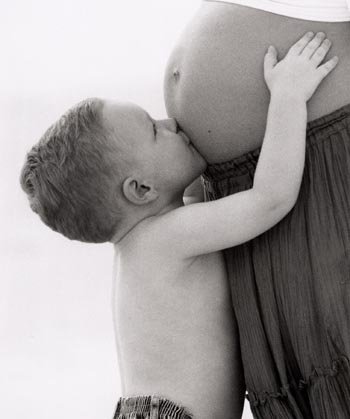 Pregnancy is a time of introspection, excitement, and, often, anxiety for most new mamas. When those new mamas also have other small children at home, that anxiety can become overwhelming as they worry about how they’ll cope with more than one child and how the current little loves of their life will cope with a new sibling. While these are very valid concerns, there are steps you can take to prepare your child for a new sibling and help them to adjust when the new baby arrives that will also help you to cope with life as a mama of more than one little blessing.
Pregnancy is a time of introspection, excitement, and, often, anxiety for most new mamas. When those new mamas also have other small children at home, that anxiety can become overwhelming as they worry about how they’ll cope with more than one child and how the current little loves of their life will cope with a new sibling. While these are very valid concerns, there are steps you can take to prepare your child for a new sibling and help them to adjust when the new baby arrives that will also help you to cope with life as a mama of more than one little blessing.
Once you discover you’re expecting, you’ve got months and months to prepare your child for the arrival of a new sibling, so here are 25 tips for during your pregnancy and after the new baby arrives to make the new baby transition a smoother and sweeter journey for everyone:
- Help your older child make their own ‘sister/brother on the way’ announcements so they feel like they are part of the transition from the beginning.
- Bring them along to sonograms, doctor’s appointments, shopping for baby things, etc.
- Reassure them that parents’ love multiplies instead of divides and that they will always be loved and important. Point out other families with more than one child so they can see that truth for themselves. If they’re old enough to understand, try a simple illustration such as letting them put different colors of water beads, one for each family member including the baby-on-the-war, into a glass of water. Tell them the water is like love, and it grows the beads into a rainbow of beautiful colors just like love grows our hearts bigger and bigger so there’s plenty of love for everyone.
- Present the new baby-on-the-way as ‘theirs,’ a special gift sent just for them so they will have a best friend for life. Talk about their friends who have siblings and how they always have someone to play with and someone to help them when they need it.
- Find children’s books about welcoming a new sibling, taking care of a new baby, when mommy breastfeeds, etc. to read to them before the birth. Here is a great list to get you started.
- Let them help decorate the nursery, put together the stroller, pack up the hospital bag (or prepare for your homebirth), buckle in the car seat, etc.
- Ask the person giving your baby shower to let your child ‘co-host’ and help with the party planning, set-up, serving snacks, and playing games.
- Help them make a special ‘welcome’ gift for the new baby and wrap it in paper they’ve decorated with stamps or finger paint.
- Buy them a special ‘welcome’ gift that you give them when they visit their new sibling for the first time. One idea is to buy them a child-sized baby carrier along with a doll, some diapers, wipes, mini baby blankets, etc. so they can take care of their baby while you take care of yours.
- Help them make their own family scrapbook with places to put the new baby’s pictures and pictures of them with their new little sibling when the new baby comes.
- Tell them stories about when they were born and show them pictures of their homecoming and first weeks of life.
- Let them help you work on updating their baby book.
- Take them to pick out a baby book for the new baby.
- Begin an open-ended conversation about how they’re feeling about having a new baby in the family to allow them to express their natural worries about how their role in the family might change, if they will still be able to play with their own toys, if the baby will cry a lot, etc. Continue this conversation throughout your pregnancy and after the new baby arrives to keep the communication lines open and your connection intact.
- Take them to visit the hospital and stop at the gift shop to buy a baby gift and a little treat for them to build excitement.
- Have lunch at the hospital cafeteria two or three times leading up to your birth to help them get used to the environment.
- Work on building other attached relationships with significant adults in your child’s life (spouse, grandparents, aunts, uncles, etc.) so that your little one is used to having their needs attended to by someone other than mama at times and so they can play and get one-on-one time with another caregiver while mama is busy with the new baby.
- On their first visit with their new sibling, let them sit in bed with you and hold their new little sibling. Have a ‘big sister/brother’ t-shirt for them to wear and take lots of pictures of both of them together and with other family members. Ask whoever you have caring for your older child to stop on the way home to print out a few of the pictures and then help them put the pictures in the scrapbook they created with you at home.
- When the new baby arrives continue to present the baby as ‘theirs’ to love and enjoy and care for. Include them in helping with diaper changes, snuggling on your other side with storybooks for you to read while nursing/feeding the new baby, singing the baby to sleep, etc. Make sure you invite them to participate instead of insisting because they may need some time to adjust to the newness of everything before they’re ready.
- Keep your expectations in line with your child’s developmental stage and make accommodations whenever possible. For instance, expecting a toddler to willingly give up their crib to a new baby is probably unrealistic. Moving your toddler to a new bed early in your pregnancy and then involving them in getting the crib ready for the new baby later on, after they’ve adjusted to their new bed, might be more successful.
- If your older child is a toddler or preschooler, you can expect some regression into babyish behavior as they work to adjust to their new role and find their place in the new family dynamic. Don’t respond with punishment, shaming, or pressure to ‘be a big boy or girl.’ Instead allow them the space and time they need to explore how it feels to be a baby again while at the same time drawing their attention to the benefits of being the older sibling (i.e. “Look how you can walk on your strong legs wherever you want to go! Your baby sister can’t walk yet, can she?” or “Wow, you can pick out your own shoes and even put them on yourself! Your baby brother can’t do that yet, can he?” or “Look at all the yummy foods you get to eat. It’s nice being bigger so you don’t have to just have milk, isn’t it?”)
- Be specific about how your child should treat the new baby. Instead of “Be nice!” try “Can you use a kind voice with your brother?” and instead of “Don’t be so rough!” try “Can you give your sister a gentle hug?”
- Make sure your child’s boundaries are clear and consistent. If you let them hop around the baby’s bouncer to make the new baby laugh one day, you can be sure they’ll try bouncing around the baby’s bouncer again and again and again. If you think that’s dangerous, set a clear boundary, explain the reason for the boundary, and give them an alternative (i.e. “Hopping next to the baby is dangerous. You might fall on the baby and hurt him! That would make you sad, and the baby would be sad, too. If you need to hop, you can hop like a bunny over here next to me.”)
- Keeping a consistent, familiar routine for your older child will help them to feel less out-of-control as they adjust to all of the other changes going on in their life. Make sure you’re flexible and in-tune with your child’s changing needs, though. They will most likely communicate their natural anxiety at this big transition in the family with some acting out behaviors, clinginess, whining, and/or resistance to bedtime and other normal routines. For instance, they may have been fine with one story and a hug at bedtime before the new baby arrived, but after their new sibling comes home they may need extra cuddles, time, and the reassurance of your love and ongoing commitment to their wellbeing before they’re able to go to sleep.
- Talk, talk, talk to your little ones throughout each and every day. Your hands may be busy more often than not, but you can still maintain that all-important connection through communication!
Keep in mind that nothing will completely eliminate the possibility of some jealousy, regression, or acting out when a new baby arrives because it’s a huge transition and it will take time for everyone in the family to adjustment, but these suggestions will go a long way toward setting the stage for the smoothest transition possible.
 Related posts:
Related posts:
Ten Steps to Surviving the First Three Months with a Newborn
Love in the Time of Cosleeping
300+ Nicknames for Your Babykins…Doodlebug…Snugglebunny…
Babywearing Basics Resource Guide
Breastfeeding, Babywearing, and Bouncing Back into Shape after Baby
The Thoughtful Parent’s Guide to Positive Parenting Guides
The Taming of the Tantrum: A Toddler’s Perspective
Practical, Gentle, Effective Discipline
10 Ways to Play with your Children when Play is the Last Thing on your Mind
200 Ways to Bless Your Children with a Happy Childhood
August 26, 2013 | Categories: anxiety, attachment parenting, babywearing, birth, breastfeeding, children's books, communication, cosleeping, family, gentle parenting, motherhood, newborn, positive parenting, pregnancy, preschooler, toddler, Uncategorized | Tags: breastfeeding, new baby, newborns, nursing, parenting, pregnancy, preschoolers, siblings, toddlers | 5 Comments »  Award-winnning author, L.R.Knost, is the founder and director of the children's rights advocacy and family consulting group, Little Hearts/Gentle Parenting Resources, and Editor-in-Chief of Holistic Parenting Magazine. Books by L.R.Knost include Whispers Through Time: Communication Through the Ages and Stages of Childhood ; Two Thousand Kisses a Day: Gentle Parenting Through the Ages and Stages ; The Gentle Parent: Positive, Practical, Effective Discipline ; and Jesus, the Gentle Parent: Gentle Christian Parenting the first four books in the Little Hearts Handbook gentle parenting series, and children’s picture books Petey’s Listening Ears and the soon-to-be-released Grumpykins series.
Award-winnning author, L.R.Knost, is the founder and director of the children's rights advocacy and family consulting group, Little Hearts/Gentle Parenting Resources, and Editor-in-Chief of Holistic Parenting Magazine. Books by L.R.Knost include Whispers Through Time: Communication Through the Ages and Stages of Childhood ; Two Thousand Kisses a Day: Gentle Parenting Through the Ages and Stages ; The Gentle Parent: Positive, Practical, Effective Discipline ; and Jesus, the Gentle Parent: Gentle Christian Parenting the first four books in the Little Hearts Handbook gentle parenting series, and children’s picture books Petey’s Listening Ears and the soon-to-be-released Grumpykins series.
10 Ways to Play with Your Children when Play is the Last Thing on Your Mind
[Portions reprinted from Whispers Through Time: Communication Through the Ages and Stages of Childhood by L.R.Knost. Two Thousand Kisses a Day: Gentle Parenting Through the Ages and Stages and The Gentle Parent: Positive, Practical, Effective Discipline also available on Amazon and through other major retailers.]
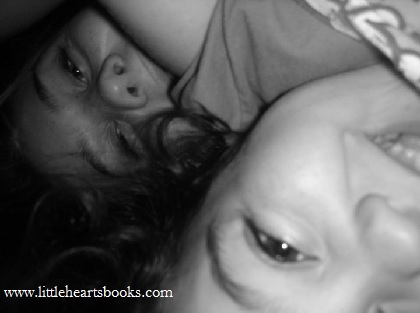 Let’s be honest. Parents are adults, and not every adult is comfortable sitting on the floor playing with stuffed animals for hours at a time. We don’t always eagerly jump in puddles or make mudpies. We often have heavy things weighing on us…health issues, financial strains, layoffs threatening, marital conflict…and playing is simply the very last thing on our minds.
Let’s be honest. Parents are adults, and not every adult is comfortable sitting on the floor playing with stuffed animals for hours at a time. We don’t always eagerly jump in puddles or make mudpies. We often have heavy things weighing on us…health issues, financial strains, layoffs threatening, marital conflict…and playing is simply the very last thing on our minds.
But the reality that play is the language of childhood and that our children need us to connect with them on their terms is on our minds. The truth that childhood is such a brief season of life and if we blink too long we’ll miss this precious time with our children just adds to the weight we carry, making playing with them seem like just another burden, another demand on our already stretched-too-thin time, attention, and patience.
The thing is, though, that our children do need us to connect with them in play. It’s in the simplicity of play that children sort through the complexity of life and, like puzzle pieces, put it all together to make sense of the world. Play is how they process the overwhelming task of acclimating to a big, strange, sometimes scary world, and they need to feel securely connected to us and in close communication with us as they find their way. Play provides that connection and builds those oh-so-important channels of communication that are essential in a healthy parent/child relationship.
That, of course, leaves us in the dichotomous position of our needs versus our children’s needs which in and of itself is not conducive to a healthy relationship. So what’s a busy, overburdened, stressed parent to do?
Enter, the playful parent who weaves humor into the humdrum, tummy tickling into the routine, dancing into the dreary, and silly songs into the mundane. Here are ten ways to weave playful parenting into the ordinary moments of everyday life:
- When your baby is an infant, babywearing is the secret to playful connection and communication building. Wearing your baby close to your heart, singing and swaying and placing soft kisses on a tiny head while doing dishes and sweeping the floors and taking the dog for walks is a lovely, low-stress way to weave playfulness into your day.
- When your baby is a bit older, continue wearing him as long as you both are comfortable with it because riding high on your hip or back lets him see the world from your vantage point and offers everyday moments to play with bubbles in the sink as you wash dishes, to dance through the house as you put away laundry, and to giggle together as you grocery shop.
- Daily routines offer awesome opportunities to play as you ‘tickle’ your little one’s teeth instead of brush them, ‘capture’ wild shoes that try to escape when you’re leaving the house, and ‘wrestle’ with your little pajama monster before bed.
- Wrangling a reluctant child into the carseat is often a dreaded daily task. Try making a game out of it by tickling a little tummy while you buckle up straps or blowing some bubbles to distract your little one or making up a silly buckle-up song to ease the transition.
- While driving, turn off the radio and make up silly stories or songs or simply talk about where you’re going or what you see as you drive.
- Reading to your little one from birth onward is the single best way to raise a reader. Try making it more interactive by acting out the story or using different voices to read or letting your child guess what’s going to happen on each page before you read it.
- Getting out the door in the morning can be a challenge. Turn it into a real challenge by having hopping contests to the car. Let your little one win and give tickle-kisses as their prize!
- Bathtime is a great time for fun. Set sail to distant shores with your little pirate and search for hidden treasure or go on a safari and find jungle animals floating in piles of bubbles or go spelunking and make cave drawings on the sides of the tub with bath crayons.
- As your children get older their need for playful connection and communication is still strong. Play word games in the car. Turn math homework into playtime by using manipulatives to help them work things out. Cook together while singing pop tunes. Arm wrestle at the dinner table. Have a quick pillow fight in the morning to put everyone’s grumpies to sleep.
- Chores are a real chore. Try turning them into a game, instead! Get out a board game with dice and every time someone rolls they not only move their game piece, but pick up the same number of toys and put them away and then race back in time for their next turn.
The central idea here is to intentionally weave fun and play and connectedness and communication into your everyday moments to turn ordinary days into extraordinary memories that will last a lifetime!
Related posts:
Practical, Gentle, Effective Discipline
200 Ways to Bless Your Children with a Happy Childhood
11 Tips to Beat the Weary Dreary Mama Blues
12 Tips for Gently Parenting Your Adult Children (Hint: It starts when they’re newborns!)
Tots to Teens~Communication Through the Ages and Stages
The Bookshelf: To Read or Not To Read
March 16, 2013 | Categories: babywearing, communication, motherhood, play | Tags: babywearing, communications, motherhood, parenting, play | 14 Comments »  Award-winnning author, L.R.Knost, is the founder and director of the children's rights advocacy and family consulting group, Little Hearts/Gentle Parenting Resources, and Editor-in-Chief of Holistic Parenting Magazine. Books by L.R.Knost include Whispers Through Time: Communication Through the Ages and Stages of Childhood ; Two Thousand Kisses a Day: Gentle Parenting Through the Ages and Stages ; The Gentle Parent: Positive, Practical, Effective Discipline ; and Jesus, the Gentle Parent: Gentle Christian Parenting the first four books in the Little Hearts Handbook gentle parenting series, and children’s picture books Petey’s Listening Ears and the soon-to-be-released Grumpykins series.
Award-winnning author, L.R.Knost, is the founder and director of the children's rights advocacy and family consulting group, Little Hearts/Gentle Parenting Resources, and Editor-in-Chief of Holistic Parenting Magazine. Books by L.R.Knost include Whispers Through Time: Communication Through the Ages and Stages of Childhood ; Two Thousand Kisses a Day: Gentle Parenting Through the Ages and Stages ; The Gentle Parent: Positive, Practical, Effective Discipline ; and Jesus, the Gentle Parent: Gentle Christian Parenting the first four books in the Little Hearts Handbook gentle parenting series, and children’s picture books Petey’s Listening Ears and the soon-to-be-released Grumpykins series.
Two Thousand Kisses a Day: Gentle Parenting Through the Ages and Stages
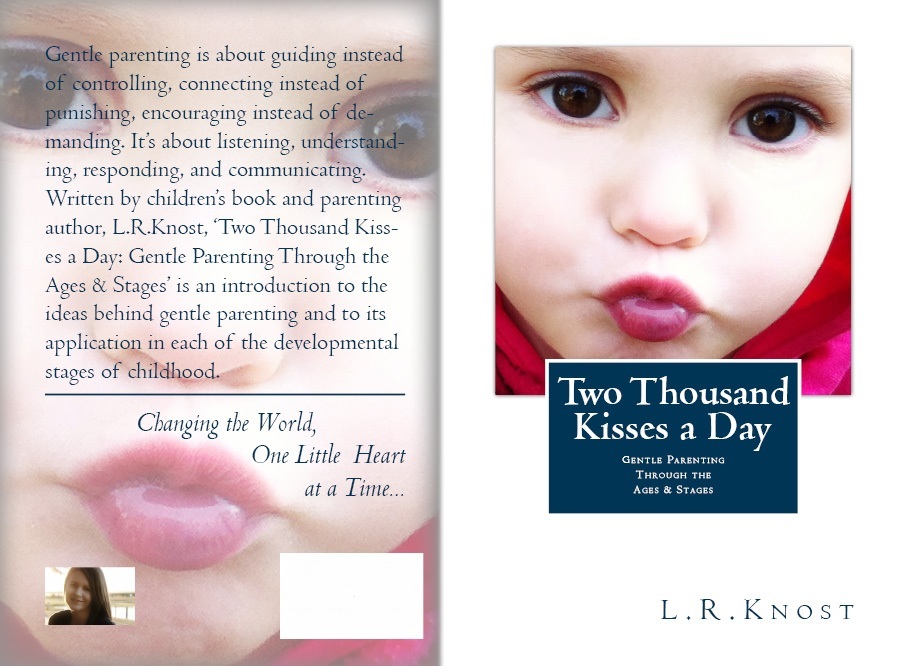 Two Thousand Kisses a Day: Gentle Parenting Through the Ages and Stages now available on Amazon:
Two Thousand Kisses a Day: Gentle Parenting Through the Ages and Stages now available on Amazon:
~The birth story of a book~
A mother is born…
Many years ago (26 to be exact!), a small, scared, pregnant, teenage girl walked down the aisle to her tall, scared, clueless, young man and they said their “I do’s.”
But what were they going to do? No earthly idea! They didn’t have the internet to surf for blogs about parenting and marriage, couldn’t afford the few paltry magazines available on those subjects at the time, and weren’t convinced that the way their parents had raised them was exactly how they wanted to raise their unexpected little blessing. So, they simply joined hands and hearts and figured it out the old-fashioned way…through trial and error.
The young girl gave birth prematurely and, after a terrifying NICU stay, brought home her barely 5 lb baby boy. Since the young couple were living on one income and were barely able to feed themselves, it made sense to them to breastfeed their little one. Neither one had ever even seen a mother breastfeeding her baby or even heard of a lactation consultant and no one at the hospital had mentioned breastfeeding at all, so the two young people just kept working through the cracked, bleeding nipples, engorgement, over-supply, and other issues until they got it figured out…and then they were breastfeeders!
Neither one of the young couple had ever read a parenting book or had ever even heard the words ‘cry-it-out,’ and the young girl discovered their first night home how much easier it was to clear away all of the pillows and blankets to keep her baby safe and then simply take her little guy into bed with her and breastfeed him when he was hungry…and then they were co-sleepers!
‘Self-soothing’ was another term the two young people had never heard, so the two of them just did what came naturally and picked up their baby when he fussed or grunted or just looked cute and finally found it easier to just snuggle their little preemie into a baby carrier and tote him around with them wherever they went…and then they were babywearers!
As their precious little guy got bigger and began to explore his new world, the young couple delighted in everything he did and simply moved him or distracted him with songs and toys if he got into things. They couldn’t bear the thought of hurting their son, so punitive parenting just wasn’t an option. They decided to treat their little guy like a person instead of a possession and communicate with him instead of punishing him…and then they were gentle discipliners!
Now, this journey might sound like an easy one when summed up this way, but I can assure you it wasn’t. The young couple, my amazing husband and I, encountered strong criticism of our parenting choices through the years:
- We were warned that our marriage would suffer at the very least, and our babies would suffocate at the worst, if we slept with them in our bed instead of putting them in isolation to sleep.
- We were informed that my breasts would look like deflated balloons and reach my knees by my thirties if I breastfed more than a few weeks.
- We were admonished that our children would grow into spoiled brats if we responded to their needs instead of teaching them to ‘deal with it’ and ‘self-soothe’ their own, and would end up as social outcasts or criminals if we encouraged and guided them instead of spanking them.
These challenges to our parenting style were difficult at the time, and they sometimes even resulted in people choosing to de-friend us (not Facebook de-friending, in real life!), but that had the powerful positive effect of making us really examine what our beliefs were and, as a result, strengthening and solidifying our values, our marriage, and our family.
As for the dire warnings listed above:
- Our beautiful, strong, loving marriage is in its 27th year.
- Our children all survived and thrived on co-sleeping (our littlest is still safely and contentedly sleeping in our bed) and have, in their own time, moved happily to their own rooms.
- Except for being a couple of cup sizes larger at the moment since I’m breastfeeding a toddler, lol, my breasts are normal despite the fact that I’ve breastfed little ones for a cumulative 10+ years of my adult life!
- Our children are, in order, a 25-year-old Pastor (our firstborn son mentioned in the story above who is now a husband and father of two!), a 23-year-old Family Therapist, an 18-year-old pre-med university student on scholarship, 13- and 7-year-old beautiful and well-behaved homeschooled girls with lots of friends (soooo not social outcasts!), and a sweet and happy 2-year-old baby girl. Not a spoiled brat or criminal in the bunch!
Our journey to gentle parenting has had another, somewhat unexpected, effect. While we may not agree with others’ parenting choices, we have been on the receiving end of criticism far too long not to have learned this lesson: Gentle parenting is for parents, too! We have learned to respond gently to our friends who don’t agree with us, even when they don’t respond gently to us. Responding with harshness and criticism doesn’t work with adults any better than it does with children! Responding gently to those who disagree with us may or may not affect their parenting choices, but what it does do is model respectful behavior and conflict resolution to our children and, most of the time, preserve dear friendships.
A gentle parenting advocate is born…
This journey also resulted in a passion for children and family harmony that launched me many years ago into the world of parent coaching and child advocacy and later initiated the creation of Little Hearts/Gentle Parenting Resources as a consulting and educational resource for parents, caregivers, and educators. The culmination of this work led to the development of a series of gentle parenting handbooks designed to equip parents with the information and tools they need to gently guide their children from infancy through toddlerhood and the preschool years and on through middle childhood, the teen years, and beyond.
A book is born…
Two Thousand Kisses a Day: Gentle Parenting Through the Ages and Stages is the first in the series. It is an introduction to the ideas behind gentle parenting and provides practical examples of its application in each of the developmental stages of childhood such as the transition from diapers to potty, problems with sharing, coping with picky eaters, guiding children gently through behavioral issues, and more!
*also published in The Natural Parent Magazine
February 20, 2013 | Categories: adolescence, anxiety, attachment parenting, baby led weaning, babywearing, birth, books, breastfeeding, character, childhood, children, communication, cosleeping, discipline, family, fear, gentle discipline, gentle parenting, meltdown, middle childhood, motherhood, natural parenting, newborn, nursing, parenting guide, positive discipline, positive parenting, preschooler, rebellion, sharing, soothing, spanking, tantrum, teens, time-in, time-out, toddler, volunteering, wisdom | Tags: gentle discipline, gentle parenting, parenting book, parenting guide, positive parenting | 3 Comments »  Award-winnning author, L.R.Knost, is the founder and director of the children's rights advocacy and family consulting group, Little Hearts/Gentle Parenting Resources, and Editor-in-Chief of Holistic Parenting Magazine. Books by L.R.Knost include Whispers Through Time: Communication Through the Ages and Stages of Childhood ; Two Thousand Kisses a Day: Gentle Parenting Through the Ages and Stages ; The Gentle Parent: Positive, Practical, Effective Discipline ; and Jesus, the Gentle Parent: Gentle Christian Parenting the first four books in the Little Hearts Handbook gentle parenting series, and children’s picture books Petey’s Listening Ears and the soon-to-be-released Grumpykins series.
Award-winnning author, L.R.Knost, is the founder and director of the children's rights advocacy and family consulting group, Little Hearts/Gentle Parenting Resources, and Editor-in-Chief of Holistic Parenting Magazine. Books by L.R.Knost include Whispers Through Time: Communication Through the Ages and Stages of Childhood ; Two Thousand Kisses a Day: Gentle Parenting Through the Ages and Stages ; The Gentle Parent: Positive, Practical, Effective Discipline ; and Jesus, the Gentle Parent: Gentle Christian Parenting the first four books in the Little Hearts Handbook gentle parenting series, and children’s picture books Petey’s Listening Ears and the soon-to-be-released Grumpykins series.
Peaceful Parent, Happy Kids~An Interview with Dr. Laura Markham
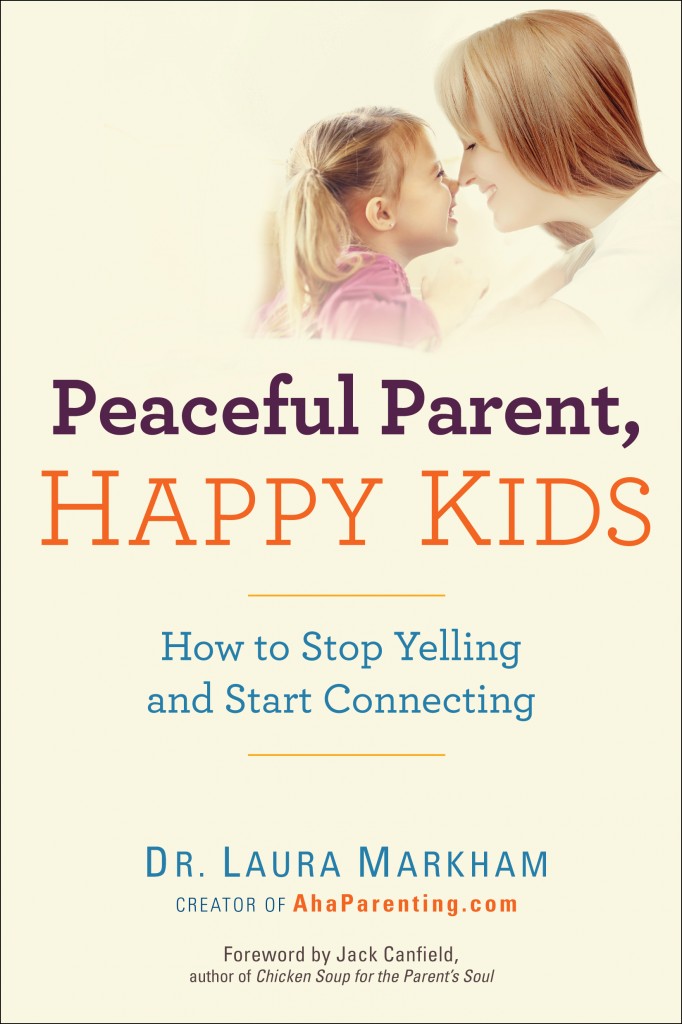 Dr. Laura Markham’s website, AhaParenting.com, is one of my favorite go-to resources to share with parents. With sound advice based on clinical and personal experience and supported by research, Dr. Markham offers excellent guidance for parents looking for help in their gentle parenting journeys.
Dr. Laura Markham’s website, AhaParenting.com, is one of my favorite go-to resources to share with parents. With sound advice based on clinical and personal experience and supported by research, Dr. Markham offers excellent guidance for parents looking for help in their gentle parenting journeys.
Now, there’s a new resource from Dr. Markham that I’m delighted to share with you: her new parenting guide, Peaceful Parent, Happy Kids: How to Stop Yelling and Start Connecting! With a personable approach, clear explanations, and anecdotal illustrations, you’ll find Peaceful Parents, Happy Kids: How to Stop Yelling and Start Connecting an easy-to-read, helpful resource to keep on hand and to share with other parents in need of a little guidance. (Check back here on Monday for a chance to win a copy for free!)
Dr. Markham honored Little Hearts/Gentle Parenting Resources with the opportunity to be a part of her virtual book tour to launch her new book by engaging in an online interview with me. Here is the transcript from our surprisingly candid and insightful interview:
Welcome, Dr. Markham! Will you share your background/experience/education with my readers?
I’m trained as a clinical psychologist. When I got my PhD at Columbia University, my mentor was Dr. Larry Aber, an attachment theorist who ran the Barnard Toddler Center.
I was fascinated by the longitudinal studies that followed children over time and found that securely attached children are easier to raise, do better in school, are better liked by teachers and peers, are more professionally successful, are happier, are healthier, have better romantic relationships and marriages, enjoy parenting more, and are more likely to themselves raise securely attached children.
Unfortunately, only about 60% of children in the US (this varies a bit across cultures) are estimated to be securely attached, leaving the other 40% to struggle emotionally for their entire lives. And yet, this is something we can change – by working with parents! We can accurately project whether a child will be securely attached by interviewing the mom before the child is even born, and we can work with the parents to help them resolve their own attachment issues to raise a securely attached child. Every parent deserves that opportunity. That’s why I specialize in parenting.
So you advocate Attachment Parenting?
I’m an Attachment Theorist, but Attachment Parenting is not quite the same as Attachment Theory.
Attachment Parenting is a set of practices – for instance, wearing your baby, breastfeeding and co-sleeping – that are thought to promote a secure attachment. As an Attachment Theorist, I think it’s important to point out that while these practices may facilitate more responsive parenting—which does indeed contribute to a secure attachment—they are not the actual cause of ‘secure attachment.’
What creates a secure attachment is a parent who is warmly responsive to the needs of her unique child and able to accept the full range of his emotions. That means, for instance, that as a parent it’s important that we’re able to tolerate our child being angry at us, or clingy, or crying. To do that, we have to be able to stay calm and regulate our own feelings, and nurture our child through his emotions. That’s what creates attachment security.
Do you recommend babywearing, breastfeeding, and cosleeping?
I lived those practices with my own children, and they made my life easier and my babies happier. I personally believe they help us to be more responsive as parents, and research is emerging to back that up. So yes, I recommend them. But my point is that if it doesn’t work for you to use one or more of these practices, for whatever reason, it doesn’t mean you can’t be a responsive parent with a securely attached child.
How has your own parenting journey contributed to your work and to your new book?
When my son was born 21 years ago, my midwife told me before I left the hospital that I should begin right away to let my son cry at night so he would sleep better. My instincts, and my training, told me that was wrong. The more suggestions I heard, the more I realized that most parenting advice we take for granted in our culture was inherited from previous generations who did not have access to the longitudinal and brain research that we have now.
For instance, we now know that the advice during the last century to “Leave your baby to cry and he’ll learn to self-soothe” simply isn’t true – babies’ brains develop the wiring to soothe themselves by being soothed by their parents. Babies who are left to cry may stop crying because they’ve learned that no one comes, but their cortisol levels are still measurably high, indicating that they’re still stressed. That stress and fear has to come out somewhere, in the baby’s cranky moods or clingy behavior.
Another example is the pervasive practice of time-outs. Children act out because they’re in the grip of strong emotions, just as adults do. Sending them off alone to calm down gives them the message that having emotions is a bad thing, and that they’re all alone to learn to manage their overwhelming, scary feelings. And punishment actually hinders moral development—it doesn’t help the child behave better.
When my son was born, I saw so many parents around me struggling. Parenting is the hardest work we do, as I learned first hand, and parents don’t get the support we need and deserve. But I also saw parents unknowingly creating problems with their children by following well-intentioned, but misinformed, advice. These were wonderful people who loved their children without reservation and only wanted what was best for their children. They would have been horrified to learn that their own actions were making their kids act out more. So I wanted to support parents and help them get a better start with their children.
What influence did your own childhood experiences have on your parenting philosophy?
My parents both loved me, but they were divorced and had their own challenges. They couldn’t handle their own emotions, much less mine. I remember vividly how fast I had to grow up, how lonely I felt, how I was looking in all the wrong places for someone to love me as a teenager.
Now, I couldn’t have explained to you, even as a 16-year-old, what was wrong. But having that experience, I can say with total certainty that every child who is acting out is sending us an SOS for understanding, connection, and help with their emotions—no matter how incomprehensible their behavior may be to us.
How is it that you came out of those experiences okay?
Parents often ask me that when they hear about my childhood. I spent years in therapy and years meditating. I still have to work at taking care of myself; it doesn’t come naturally because I wasn’t taken care of. And I’m just lucky that I didn’t have additional risk factors – like ADHD, or a vulnerability to addiction – or I might not have made it to adulthood.
But there are two positive takeaways here:
1. No matter what your childhood was like, you can heal it and be the parent your child needs.
2. No parent is perfect, because we’re human. Luckily, children are pretty resilient. What we do right is more important in creating the solid foundation for our kids than those times we mess up.
What has most impacted your parenting philosophy?
My understanding of children includes my training in child development, especially Attachment theory, which I’ve already mentioned. What I see parents struggling with is always emotions – their own, and their child’s. We all need a loving “witness” so we can heal our emotional hurts, which I first learned from Virginia Axline and Carl Rogers, and then saw Aletha Solter put into practice with babies.
Of course, recent neurological findings have helped me flesh out and evolve my approach, so I’m a fan of Dan Siegel and Allan Schore. Finally, my specialty is practical solutions to the issues of everyday family life, so I’ve learned from countless leaders in the field –Adele Faber, Magda Gerber, Patty Wipfler, Larry Cohen, Jane Nelsen, and so many more.
How does the style of parenting you advocate build trust to set the stage for a peaceful, mutually respectful parent/child relationship throughout the childhood and adolescent years?
Every time we listen to our crying baby, tantruming toddler, or whining preschooler and respond to her needs, we build our child’s trust that we’re on her side, looking out for her best interests.
Every time we resist our impulse to lash out with punishment, and instead help our child with the feelings that are driving her behavior, we help her gain the emotional skills to manage her behavior.
Every time we seek first to connect, and only then to guide, we help our child want to follow our guidance.
That slow accretion of respectful interactions is what builds the strong relationship we all want with our children. Our children learn that’s how to live in relationship, so they’re naturally respectful, compassionate and considerate. They treasure their relationship with us, and would no more damage that relationship — by lying to us, or defying us — than they would set fire to the house, and for the same reasons.
I now have a 21-year-old and a 17-year-old. We never had the rocky teen years that scare parents. I think that tough teen stage is completely unnecessary; it’s created by a parenting style that doesn’t meet kids’ needs.
If you had to sum up your parenting philosophy in a single sentence, what would it be?
Choose love.
Or more specifically:
Manage your own emotions so that you can listen, empathize and stay connected with your child as you guide him. When you get upset, breathe through it and don’t take action until you’re centered again so you have access to your deeper wisdom.
Dr. Markham, thank you so much for including ‘Little Hearts/Gentle Parenting Resources’ in your virtual book tour, and good luck with the launch of ‘Peaceful Parent, Happy Kids: How To Stop Yelling and Start Connecting’!
~~~~~~~~~~~~~~
 Dr. Laura Markham trained as a clinical psychologist, but she’s also a mother, so she understands parents as well as kids. Her new book is Peaceful Parent, Happy Kids: How to Stop Yelling and Start Connecting. You can get Dr. Laura’s free daily or weekly emails online at AhaParenting.com, the home of Aha! Moments for parents of babies through teens.
Dr. Laura Markham trained as a clinical psychologist, but she’s also a mother, so she understands parents as well as kids. Her new book is Peaceful Parent, Happy Kids: How to Stop Yelling and Start Connecting. You can get Dr. Laura’s free daily or weekly emails online at AhaParenting.com, the home of Aha! Moments for parents of babies through teens.
November 29, 2012 | Categories: attachment parenting, babywearing, books, breastfeeding, cosleeping, parenting guide, positive discipline, positive parenting | Tags: babywearing, emotional intelligence, parenting, positive discipline, positive parenting, time-out | 4 Comments »  Award-winnning author, L.R.Knost, is the founder and director of the children's rights advocacy and family consulting group, Little Hearts/Gentle Parenting Resources, and Editor-in-Chief of Holistic Parenting Magazine. Books by L.R.Knost include Whispers Through Time: Communication Through the Ages and Stages of Childhood ; Two Thousand Kisses a Day: Gentle Parenting Through the Ages and Stages ; The Gentle Parent: Positive, Practical, Effective Discipline ; and Jesus, the Gentle Parent: Gentle Christian Parenting the first four books in the Little Hearts Handbook gentle parenting series, and children’s picture books Petey’s Listening Ears and the soon-to-be-released Grumpykins series.
Award-winnning author, L.R.Knost, is the founder and director of the children's rights advocacy and family consulting group, Little Hearts/Gentle Parenting Resources, and Editor-in-Chief of Holistic Parenting Magazine. Books by L.R.Knost include Whispers Through Time: Communication Through the Ages and Stages of Childhood ; Two Thousand Kisses a Day: Gentle Parenting Through the Ages and Stages ; The Gentle Parent: Positive, Practical, Effective Discipline ; and Jesus, the Gentle Parent: Gentle Christian Parenting the first four books in the Little Hearts Handbook gentle parenting series, and children’s picture books Petey’s Listening Ears and the soon-to-be-released Grumpykins series.
Breastfeeding, Babywearing & Bouncing Back into Shape after Baby
[By L.R.Knost, author of Two Thousand Kisses a Day: Gentle Parenting Through the Ages and Stages, Whispers Through Time: Communication Through the Ages and Stages of Childhood, and The Gentle Parent: Positive, Practical, Effective Discipline available on Amazon and through other major retailers.]
~~~~~~~~~~~~~~~~~~~~~
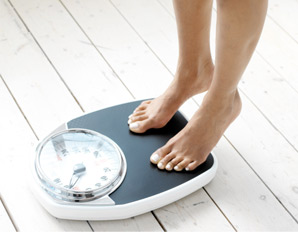 There is no such thing as a ‘miracle’ weight-loss plan, but living a healthy, active life and eating nutritious meals doesn’t have to be all about sweat, sacrifice, and self-discipline, either. It can be about having fun, eating foods you love, and, best of all, it can fit right in with your lifestyle! By following a few basic nutritional guidelines and finding ways to fit exercise into your daily life, you can create your own ‘life plan’ and start moving toward your weight-loss and health goals.
There is no such thing as a ‘miracle’ weight-loss plan, but living a healthy, active life and eating nutritious meals doesn’t have to be all about sweat, sacrifice, and self-discipline, either. It can be about having fun, eating foods you love, and, best of all, it can fit right in with your lifestyle! By following a few basic nutritional guidelines and finding ways to fit exercise into your daily life, you can create your own ‘life plan’ and start moving toward your weight-loss and health goals.
1.) Practice the 3 B’s
Breastfeeding~Did you know that one of the best ways to lose weight after giving birth is to breastfeed? Breastfeeding uses about 300-500 of the calories you eat each day. That means if you eat the full amount of daily recommended calories for your weight, you’re actually dieting! I don’t recommend calorie-counting as a means of weight loss, but that’s a pretty cool fact, anyway! And when you add the fact that breastfeeding significantly reduces your risk of breast cancer and is super healthy for baby…win-win-win!
Babywearing ~Did you know that in addition to all of the amazing benefits to your baby, babywearing also offers you an excellent opportunity for a daily workout? Wearing your baby works your core and glutes specifically and gives you a full body workout, as well! Who needs a gym when housecleaning, walks on the beach, strolls through the mall, and just daily life in general are an excellent workout, all while keeping baby next to your heart and close enough for kisses?!?
Bouncing~Did you know that kegels can actually do more harm than good? Shallow knee bends like the ones mommies use instinctively when they bounce to soothe a fussy baby are the preferred method of improving the pelvic girdle! So say goodbye to the sneezing/laughing ‘leakies’ and hello to buns and thighs of steel!
2.) Healthy Eating, It Does a Body Good
Did you know that a low fat diet can actually make you fat? A diet of full-fat milk, real butter, real cane sugar, extra virgin olive oil, coconut oil, fat-marbled meat, eggs, nuts of all kinds, cheeses, fruits, veggies, and whole grain pastas and breads is far more likely to help you lose weight and maintain a healthy weight for life.
Along with enjoying these yummy foods, you’ll lose weight faster and be overall healthier by avoiding High Fructose Corn Syrup (HFCS – it’s in practically everything…breads, juices, jellies, etc…so you’ll have to read labels carefully!) and other corn-derived syrups and sugars, along with food dyes, margarine, vegetable/canola/safflower oils, and artificial sweeteners.
If you’ve got a sweet-tooth, denying yourself a treat can lead to overeating as you try to satisfy that urge with other foods. One way to combat that is to indulge in a small amount of ice cream (without HFCS or other corn syrups!) or dark chocolate, preferably in the evening because raising your blood sugar earlier in the day tends to increase your appetite for the rest of the day.
Keep in mind, letting yourself become hungry is one of the surest paths to overeating! It’s far better to eat multiple, small, snack-type meals throughout the day than to wait for meals when you’ll be hungrier and more likely to eat too much. Other benefits to ‘snacking’ instead of eating three full-on meals are 1.) Maintaining a consistent blood sugar, which aids in appetite control and helps your body escape the ‘survival’ instinct to store fat; 2.) Reducing your appetite naturally by eating smaller amounts at a time which helps your stomach to shrink; and 3.) Increasing your metabolism by consistently keeping your digestive system heated up in ‘burn mode.’
Sample meal plan:
1st Breakfast~
¼ cup almonds & ¼ cup raisins
2nd Breakfast~
1 whole egg (Yes, eat the yolk, too! That’s where most of the healthy nutrients are.)
1 Whole wheat English muffin with real butter and ¼ cup natural fruit preserves
8 oz. cottage cheese
Elevensees~
½ cup pretzels & 2 oz. whole-fat cheese
Lunch~
Spinach salad with ¼ cup shredded carrots, ¼ cup dried apricots or cranberries, 2 oz. whole-fat shredded cheese, 4 oz. shredded pork, 2 tbs. minced almonds or sunflower seeds , and 2-4 tbs. Balsamic Vinaigrette (Read the label and watch out for HFCS!)
Tea~
8 oz. yogurt & ¼ cup granola & ¼ cup berries
Supper~
Fettucini Alfredo, Meatball Sub, Pizza, whatever you want! Just fill up your plate as you normally would, then put back half. After you eat, wait 20 minutes and, if you’re still hungry, eat ¼ of what you put back. (Supper is where most people ‘fail’ because that’s the time most social eating occurs. Rather than denying yourself and setting yourself up for failure, this plan allows you to enjoy the foods and social life you’re accustomed to, while still cutting out ¼ to ½ of the calories you’d normally eat at this meal.)
Dessert~
For those with a sweet tooth, after supper is the best time for a few ounces of dark chocolate or ice cream! Pastries and cakes aren’t good choices for a treat, but if you indulge occasionally, no worries 🙂
Bedtime snack~
¼ cup almonds & ¼ cup dried pomegranates or cranberries
You can take this sample plan and switch out items from the same food group so it fits your tastes. For instance, if you don’t like salads, you could switch out the lunch salad with a baked whole grain pork burrito and top it with lettuce, tomato, cheese, etc. Just try to make sure that for every protein/fruit/veggie/dairy you take out, you put the same amount back in. (Sorry about The Hobbit reference. I couldn’t resist!)
3.) A Grateful Heart is a Healthy Heart
Science has proven that a good outlook on life improves not only the quality of a person’s life, but also the length and health aspects of their life. Taking time to intentionally focus on the good things in your life will improve your health, satisfaction, and overall happiness. Here are some ideas:
A.) Get outdoors! Heading out into the sunshine has been shown to improve a person’s mood as well as their health. There’s something about standing in the midst of towering trees or watching butterflies flutter by in the garden that makes stress just melt away. (And a daily dose of sunshine-induced Vitamin D is good for your bones!)
B.) Walka-Walka-Walka! Walking improves circulation and deepens breathing, both of which will make you feel more alive and ready to take on the world!
C.) Count your blessings! Taking time each day to list and be thankful for the good things in your life helps to create balance, making life feel more manageable when it begins to feel overwhelming.
D.) Volunteer! Reaching out to help your fellow humans in need is a great way to make your life feel a lot more purposeful and to help you get a healthy perspective on the stresses in your life.
E.) Laugh out loud! We all type that little ‘lol’ all the time when we’re online, but did you know that actually doing it, really and truly laughing out loud, releases stress-relieving, feel-good endorphins in our bodies? So watch a comedy routine, catch a funny old sit-com rerun, or just sit and enjoy a child playing for ten minutes, and you’ll be sure to laugh away the blues!
*Obligatory disclaimer: I am not a doctor, nor do I play one on TV. This is a guide (not a diet) that I created to return to my pre-pregnancy (Well, pre-pregnancies, actually, since I have six children!) shape and weight in a healthy and swift fashion and that I continue to follow for weight maintenance and healthy nutrition. This guideline is not designed for special health needs. Be sure to check with your doctor or other health professional if you have any health concerns.
Related posts:
Babywearing Basics Resource Guide
10 Ways to Play with your Children when Play is the Last Thing on your Mind
Parenting, Trickery & The Great Obesity Lie
June 24, 2012 | Categories: attachment parenting, baby led weaning, babywearing, birth, breastfeeding, cosleeping, food, motherhood, natural parenting, newborn, nursing, pregnancy, soothing, toddler, Uncategorized | Tags: attachment parenting, babywearing, breastfeeding, exercise, health, healthy eating, natural parenting, newborn, nursing, nutrition, parenting, pregnancy, toddlers | 7 Comments »  Award-winnning author, L.R.Knost, is the founder and director of the children's rights advocacy and family consulting group, Little Hearts/Gentle Parenting Resources, and Editor-in-Chief of Holistic Parenting Magazine. Books by L.R.Knost include Whispers Through Time: Communication Through the Ages and Stages of Childhood ; Two Thousand Kisses a Day: Gentle Parenting Through the Ages and Stages ; The Gentle Parent: Positive, Practical, Effective Discipline ; and Jesus, the Gentle Parent: Gentle Christian Parenting the first four books in the Little Hearts Handbook gentle parenting series, and children’s picture books Petey’s Listening Ears and the soon-to-be-released Grumpykins series.
Award-winnning author, L.R.Knost, is the founder and director of the children's rights advocacy and family consulting group, Little Hearts/Gentle Parenting Resources, and Editor-in-Chief of Holistic Parenting Magazine. Books by L.R.Knost include Whispers Through Time: Communication Through the Ages and Stages of Childhood ; Two Thousand Kisses a Day: Gentle Parenting Through the Ages and Stages ; The Gentle Parent: Positive, Practical, Effective Discipline ; and Jesus, the Gentle Parent: Gentle Christian Parenting the first four books in the Little Hearts Handbook gentle parenting series, and children’s picture books Petey’s Listening Ears and the soon-to-be-released Grumpykins series.
Babywearing Basics Resource Guide
[Portions reprinted from Two Thousand Kisses a Day: Gentle Parenting Through the Ages and Stages by L.R.Knost. Whispers Through Time: Communication Through the Ages and Stages of Childhood, and The Gentle Parent: Positive, Practical, Effective Discipline by L.R.Knost also available on Amazon and through other major retailers.]

Wearing your baby against your heart is one of the most beautiful and bonding experiences you can have with your little one after giving birth. Studies have even shown that mamas and babies can synchronize their heartbeats with a simple smile! Clearly, wearing your baby within kissing distance, where the slightest tilt of the head brings your smile into focus for your precious new little one, is a wonderful gift of connection that has benefits far, far beyond our understanding!
I have six children, so I can testify to the extreme value of babywearing for being able to continue with a busy life after giving birth to a tiny new person. From attending sports practices to grocery shopping to making dinner to housecleaning, babywearing is a life-saver, not to mention a great source of exercise to get that pre-baby body back!
In addition to the benefits to a busy mama, babywearing can also replace tummy-time for little ones who don’t enjoy being stuck on the floor. While being worn, babies’ core and neck muscles are being strengthened by the motion of a mother’s body while she walks and bends and moves throughout the day.
I’ve been gathering resources for a babywearing post and couldn’t resist using this cute picture to illustrate it even though the little guy isn’t in the best position for hip health. But I just love seeing daddies wearing babies as well as mommies wearing babies. Check out the resources below for information about the different kinds of carriers available, different kinds of positions you can use, health and development benefits, how to make your own no-sew wrap, and more!
 Ask Dr. Sears About Babywearing
Ask Dr. Sears About Babywearing
Informative articles and answers to common babywearing questions from Dr. Sears.
Tons of articles and resources about babywearing from one of my favorite baby carrier providers, Boba.
Lots of excellent babywearing information from an extremely versatile carrier from another favorite of mine, Onya Baby.
Peer reviewed articles, scientific studies and analysis, historical precedent, cultural influence, and more from TheBabyWearer.com
 Baby carriers and accessories~product reviews
Baby carriers and accessories~product reviews
Over one thousand babywearing products reviewed…almost seven thousand reviews!
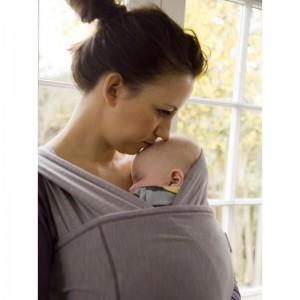 Gentle Responses to Babywearing Negativity
Gentle Responses to Babywearing Negativity
From “Don’t you ever put that poor baby down?” to “My baby did just fine in a buggy”…here are some lovely suggestions for gentle responses to negative comments.
 International Hip Dysplasia Institute
International Hip Dysplasia Institute
Proper baby carrier positioning recommendations from the International Hip Dysplasia Institute.
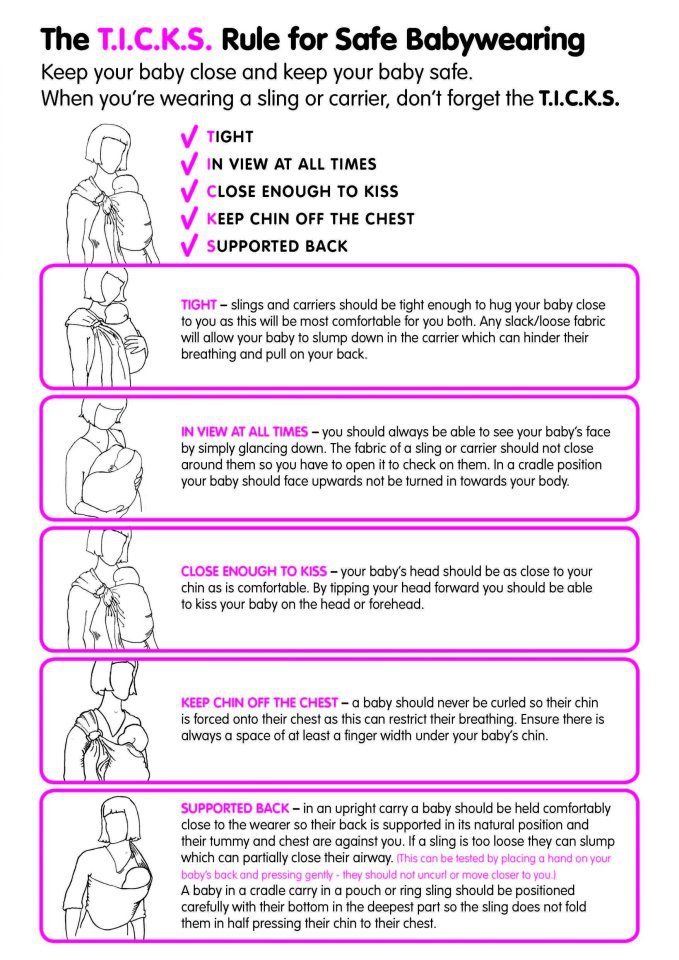
And some YouTube finds…
How to make a no-sew wrap:
A mama of twins demonstrates front and back carries…
Related posts:
Ten Steps to Surviving the First Three Months with a Newborn
Breastfeeding, Babywearing, and Bouncing Back into Shape after Baby
May 14, 2012 | Categories: attachment parenting, babywearing, Uncategorized | Tags: attachment parenting, babywearing | 12 Comments »  Award-winnning author, L.R.Knost, is the founder and director of the children's rights advocacy and family consulting group, Little Hearts/Gentle Parenting Resources, and Editor-in-Chief of Holistic Parenting Magazine. Books by L.R.Knost include Whispers Through Time: Communication Through the Ages and Stages of Childhood ; Two Thousand Kisses a Day: Gentle Parenting Through the Ages and Stages ; The Gentle Parent: Positive, Practical, Effective Discipline ; and Jesus, the Gentle Parent: Gentle Christian Parenting the first four books in the Little Hearts Handbook gentle parenting series, and children’s picture books Petey’s Listening Ears and the soon-to-be-released Grumpykins series.
Award-winnning author, L.R.Knost, is the founder and director of the children's rights advocacy and family consulting group, Little Hearts/Gentle Parenting Resources, and Editor-in-Chief of Holistic Parenting Magazine. Books by L.R.Knost include Whispers Through Time: Communication Through the Ages and Stages of Childhood ; Two Thousand Kisses a Day: Gentle Parenting Through the Ages and Stages ; The Gentle Parent: Positive, Practical, Effective Discipline ; and Jesus, the Gentle Parent: Gentle Christian Parenting the first four books in the Little Hearts Handbook gentle parenting series, and children’s picture books Petey’s Listening Ears and the soon-to-be-released Grumpykins series.
Shared Journeys~Attachment Parenting
Parenting is far more a journey than a destination. As parents we are always learning, always researching, always growing, always adjusting. Sharing our journeys is one way we can support and encourage each other along the way! Here are some really unique ways mamas are sharing their attachment/natural/gentle parenting experiences you might enjoy:
The first is a video by The Single Crunch. Such a beautiful testimony of the love of a mother!
I am a single mom…I breastfeed and practice child-led weaning, babywear, co-sleep, cloth diaper, homebirth, and do whatever else my natural instincts move me to do, regardless of what others may think. I DO NOT “train” my children (using the cry-it-out method to get babies to sleep). I do not spank. I do not vaccinate. I try not to run to modern medicine for every problem I or my children have, opting instead for natural (homeopathic) solutions when possible…I LISTEN to my children. I try to pause before I react and think about life from their point of view. I HAVE NOT ALWAYS LIVED THIS WAY…I’ve had a hard time with many of the ideals of being crunchy, especially as a single mom. It takes time and patience and time. Lots of time. Sometimes I’m not all that patient. I used to spank…I yell…But mainstream parenting never felt right to me. I wanted to meet moms who didn’t think my attachment (and the level of attachment I desired to have) with my children was weird. I found AP because most of the women in my life felt my ideas were silly, unintelligent, impractical, and unnecessary, especially for a mom with no husband. I didn’t care. I knew my children needed more of me. I’ve always felt a strong connection to my children, and I’ve always wanted to parent the way THEY showed me they needed me to, not a way that was convenient for me. I am now working to apply all that I have learned from my other mom friends and the many groups I subscribe to, to make my girls’ lives as safe, healthy, and happy as possible. I want to raise compassionate, secure, intelligent young women who know, understand, and believe that beauty starts within. (Read more at The Single Crunch)
~~~~~~~~~~~~~~
The next is a lovely and honest post from The Mule about the blessings and challenges of breastfeeding on demand:
While I nurse you to sleep…
I...rest. For the first time today, I am still. I am not lifting, carrying, holding, bending, reaching, stretching, scrubbing, wiping, hauling, or lugging. Here in this dark room I lie beside you and allow my body and mind to come to stillness after the chaos of our day. You suck, and tug, you fiddle, and fuss…and slowly come to stillness too, until we both are still, and both are resting…I wait, momentarily, and then, I slowly slide away and leave you sleeping.
While I nurse you to sleep…
I…take stock. I turn over in my mind, the contents of the fridge, the washing on the floor, the money in the bank. I count up the years I’ve had so far and the years I might have left. I work out how old I will be when you are the age I am now – thirty seven – seventy two. I hope I make it. I count the eggs you already have in your body and those I have in mine and I wonder at the people they may become. I think about the person I was before I met you, the life I led, the things I’ve gained and the things I’ve lost, I count them all. I plan the contents of my other daughter’s lunchbox
(Read the rest of this lovely post at While I Nurse You to Sleep…)
~~~~~~~~~~~~~~
This is an excellent and entertaining look at child-led, interest-led learning from Real Child Development.
Trust the child to direct his own learning. For it seems to me a fact that, in our struggle to make sense out of life, the things we most need to learn are the things we most want to learn. To put this another way, curiosity is hardly ever idle. What we want to know, we want to know for a reason. The reason is that there is a hole, a gap, an empty space in our understanding of things, our mental model of the world. We feel that gap like a hole in a tooth and want to fill it up. It makes us ask How? When? Why? While the gap is there, we are in tension, in suspense. Listen to the anxiety in a person’s voice when he says, “This doesn’t make sense!” When the gap in our understanding is filled, we feel pleasure, satisfaction, relief. Things make sense again – or at any rate, they make more sense than they did. When we learn this way, for these reasons, we learn both rapidly and permanently. The person who really needs to know something does not need to be told many times, drilled, tested. Once is enough. The new piece of knowledge fits into the gap ready for it, like a missing piece in a jigsaw puzzle. Once in place, it is held in, it can’t fall out. We don’t forget things that make the world a more reasonable or interesting place for us. (Read the rest of this informative post at Real Child Development)
~~~~~~~~~~~~~~
The next post is from Dulce De Leche‘s ‘Gentle Discipline Toolbox’ series which has an excellent array of topics, ideas, and links!
Redirection and Mutual Solutions
My 19 month old began to love hitting. He wasn’t even angry most of the time. He just got a kick out of the sensation, the noise and the reactions. We tried softly stroking our cheeks with his hands and telling him “Gentle touches”. He giggled and slapped again. My temper and frustration were building, until I recalled something I had read by Dr. Sears. We began teaching him to give us high fives. His face lit up with delight, and he began to repeat it. He still got what he was craving–the game, noise, sensation and excitement–but now it was in a socially acceptable way that didn’t hurt anyone. I would like to say that at least we got a little advance warning as he gleefully squealed, “High fibe!” before striking, but he usually didn’t say it till he was already mid-strike. Still, it was progress… (Read more of this enlightening post at Dulce De Leche)
~~~~~~~~~~~~~~
This last honest and informative article from Positive Parenting: Toddlers and Beyond is a great introduction to positive parenting:
Skeptical About Positive Parenting?
Positive parenting, at the very core of it, isn’t about what you can and can’t do in terms of disciplining, teaching, and guiding your kids. It isn’t even about having the perfect relationship (as there will always be breaks and repairs; such is life). It’s not about techniques or tools, whether or not to use time outs or time ins, consequences or problem-solving. All of those things stem from the practice of what is at the very core of this philosophy, but they are not THE philosophy itself. What it’s really about is the way we view children, their emotions, their needs, their motives. It’s about seeing them as human beings, worthy of respect and unconditional love, delicate, impressionable, who have as much to teach us as we have to teach them… (Read more from Positive Parenting: Toddlers and Beyond)
~~~~~~~~~~~~~~
Related posts:
And Baby Makes Three~Surviving the First Three Months with a Newborn
Bizarre Anti-Cosleeping Ads in Milwaukee a Red Herring?
A Boy, A Girl, and A Baby~Journey to Gentle Parenting
The Measure of Success~Chinese Parents and French Parents Can’t BOTH Be Superior!
Tots to Teens~Communication Through the Ages and Stages
March 25, 2012 | Categories: attachment parenting, baby led weaning, babywearing, Bible, breastfeeding, childhood, children, communication, cosleeping, gentle discipline, gentle parenting, grace-based discipline, homeschooling, natural parenting, nonvaxing, play, positive discipline, positive parenting, preschooler, toddler, Uncategorized | Tags: attachment, attachment parenting, babywearing, breastfeeding, childhood, children, communication, gentle discipline, gentle parenting, homeschooling, natural parenting, play, positive parenting, preschoolers, sacrificial parenting, toddler | 1 Comment »  Award-winnning author, L.R.Knost, is the founder and director of the children's rights advocacy and family consulting group, Little Hearts/Gentle Parenting Resources, and Editor-in-Chief of Holistic Parenting Magazine. Books by L.R.Knost include Whispers Through Time: Communication Through the Ages and Stages of Childhood ; Two Thousand Kisses a Day: Gentle Parenting Through the Ages and Stages ; The Gentle Parent: Positive, Practical, Effective Discipline ; and Jesus, the Gentle Parent: Gentle Christian Parenting the first four books in the Little Hearts Handbook gentle parenting series, and children’s picture books Petey’s Listening Ears and the soon-to-be-released Grumpykins series.
Award-winnning author, L.R.Knost, is the founder and director of the children's rights advocacy and family consulting group, Little Hearts/Gentle Parenting Resources, and Editor-in-Chief of Holistic Parenting Magazine. Books by L.R.Knost include Whispers Through Time: Communication Through the Ages and Stages of Childhood ; Two Thousand Kisses a Day: Gentle Parenting Through the Ages and Stages ; The Gentle Parent: Positive, Practical, Effective Discipline ; and Jesus, the Gentle Parent: Gentle Christian Parenting the first four books in the Little Hearts Handbook gentle parenting series, and children’s picture books Petey’s Listening Ears and the soon-to-be-released Grumpykins series.
The Elves and the Homemaker
You’ve all heard the story of the industrious, magical little elves who went behind the poor, but good-hearted, shoemaker and finished his work for him, saving his shop and rewarding him for his hard work. This is not that story…
 Once upon a time there was a kind, hard-working homemaker named Elvimama. She had five children, Elvin, Elvira, Elvish, Elvis, and Baby Elvie. Elvimama worked hard every day to feed her five children Elftritious foods, teach them their Elfessons, make sure they practiced on their Elviolins, take them to their Elfootball and Elfallet practices while she grabbed an hour at Elfercize (wearing Baby Elvie, of course!), and then rushed back home to put a healthy, home-cooked Elfalicious meal on the table for dinner. Life was busy, but good…except for one thing.
Once upon a time there was a kind, hard-working homemaker named Elvimama. She had five children, Elvin, Elvira, Elvish, Elvis, and Baby Elvie. Elvimama worked hard every day to feed her five children Elftritious foods, teach them their Elfessons, make sure they practiced on their Elviolins, take them to their Elfootball and Elfallet practices while she grabbed an hour at Elfercize (wearing Baby Elvie, of course!), and then rushed back home to put a healthy, home-cooked Elfalicious meal on the table for dinner. Life was busy, but good…except for one thing.
Their Elfhouse was a mess! No matter how hard Elvimama worked, no matter how carefully she organized her day, or how little sleep she got, her Elfhousekeeping ended up looking rather…well, unkept.
She’d start with the bedrooms each morning, straightening and sweeping and organizing, then move on to the kitchen and work her way through the morning dishes and then sweep and mop and take out the trash, before heading to the Elfamily room to polish and vacuum. But she was plagued by a strange phenomenon every single day…as soon as she was finished with one room and had moved on to another, the first room mysteriously returned to it’s former state of disarray! And when she finished the second room and moved on to the third, the second room was also suddenly back to a disheveled mess!
This pattern when on throughout her day, with each bedroom cleaned, then miraculously uncleaned, the kitchen spotless, then instantly a sticky stack of unwashed dishes appearing when she headed for the Elfamily room. And, even there, when she’d polished and vacuumed and straightened, the second she walked out, piles of toys walked right back in!
Day after day, week after week, month after month, year after year, this phenomenon continued, with Elvimama starting every day with a messy house, spending every day cleaning and cleaning and cleaning, only to end every day with a still-messy house!
It was frustrating and exhausting, and sometimes Elvimama would head to the bathroom for a long soak in the tub and a good cry. But, inevitably, little elf-hands would come knocking on the door and little elf-voices would be calling out for Elvimama’s attention. Her long soak always turned into a quick wash, and she’d mop up her tears and emerge with a smile and arms ready to gather her little elf-loves close.
Time passed, and Elvin and Elvira went off to college. Elvish joined the Elf-Corp, and Elvis made the big-time in Nashville. Baby Elvie grew up and opened a little bookstore called The Elf Shelf.
One morning, Elvimama got up and started with the bedrooms, straightening and sweeping and organizing, then moved on to the kitchen and worked her way through the morning dishes and then swept and mopped and took out the trash, before heading to the Elfamily room to polish and vacuum and straighten. When she was finished, she stopped and stared in shocked silence. Everything was…spotless…pristine.
No jumbled piles of clothes had unfolded themselves in the bedrooms. No sticky stack of dishes had reappeared in the kitchen. No toys had marched back into the Elfamily room.
Her house was finally clean, but her heart longed for jelly fingerprints and funny little dirt-smudged elf-faces, muddy footprints and sticky little giggle-grin kisses. Elvimama sighed and headed to the bathroom for a long soak in the tub. Now, no little elf-hands came knocking on the door and no little elf-voices called out for Elvimama’s attention.
And Elvimama had a good cry.
~~~~~~~~~~
A mother’s love is strong enough to hold her children close when they’re young and she longs for rest, and to let them go when they grow up and she longs for the past.
L.R.Knost
Related posts:
Mommies are Mountain Climbers and Sisyphus was a Sissy
The Story of Us~25 Years and Counting!
February 27, 2012 | Categories: attachment parenting, babywearing, bookish, books, childhood, children, family, food, homeschooling, life, love | Tags: attachment parenting, babywearing, childhood, children, family, food, gentle, homeschooling, parenting, sacrifice, sacrificial parenting | 4 Comments »  Award-winnning author, L.R.Knost, is the founder and director of the children's rights advocacy and family consulting group, Little Hearts/Gentle Parenting Resources, and Editor-in-Chief of Holistic Parenting Magazine. Books by L.R.Knost include Whispers Through Time: Communication Through the Ages and Stages of Childhood ; Two Thousand Kisses a Day: Gentle Parenting Through the Ages and Stages ; The Gentle Parent: Positive, Practical, Effective Discipline ; and Jesus, the Gentle Parent: Gentle Christian Parenting the first four books in the Little Hearts Handbook gentle parenting series, and children’s picture books Petey’s Listening Ears and the soon-to-be-released Grumpykins series.
Award-winnning author, L.R.Knost, is the founder and director of the children's rights advocacy and family consulting group, Little Hearts/Gentle Parenting Resources, and Editor-in-Chief of Holistic Parenting Magazine. Books by L.R.Knost include Whispers Through Time: Communication Through the Ages and Stages of Childhood ; Two Thousand Kisses a Day: Gentle Parenting Through the Ages and Stages ; The Gentle Parent: Positive, Practical, Effective Discipline ; and Jesus, the Gentle Parent: Gentle Christian Parenting the first four books in the Little Hearts Handbook gentle parenting series, and children’s picture books Petey’s Listening Ears and the soon-to-be-released Grumpykins series.
Baby Led Weaning
[Reprinted from Two Thousand Kisses a Day: Gentle Parenting Through the Ages and Stages by L.R.Knost. Whispers Through Time: Communication Through the Ages and Stages of Childhood and The Gentle Parent: Positive, Practical, Effective Discipline also available through Amazon and other major retailers.]
 As babies grow from the newborn stage, through infancy, and into the toddler years, there is a natural and healthy progression toward independence that blossoms when a secure trust-foundation is in place. That trust-foundation is forged through the consistent meeting of a baby’s needs lovingly, gently, and empathetically by a primary caregiver.
As babies grow from the newborn stage, through infancy, and into the toddler years, there is a natural and healthy progression toward independence that blossoms when a secure trust-foundation is in place. That trust-foundation is forged through the consistent meeting of a baby’s needs lovingly, gently, and empathetically by a primary caregiver.
When a baby is breastfed, his mother is naturally close and available and, when parenting by following her maternal instincts, tends to be in tune with her baby in a beautiful symbiosis of unspoken communication. At some point, a baby will begin to ‘taste-test’ foods, learning through oral exploration about the textures and tastes of foods other than breastmilk. This progresses to a decrease in need for mommy’s milk for nutritional purposes, but is often accompanied by an unexpected and dramatic increase in demand to nurse which can be quite disconcerting, not to mention annoying!
Parents have a tendency to assign motives to their children’s behavior, typically based on their own childhood experiences and/or their adult perception of the circumstances. In the case of the increased demand for nursing which seems inversely proportional to the need for nursing, the motives parents often assign to their toddlers are ‘testing’ or ‘pushing boundaries.’
But think of it from the toddler’s perspective. They have been gradually moving away from their ‘source’ of all things and exploring what can be a big, scary world for a little person. No longer are they completely helpless, entirely dependent on another person for everything, but, as their independence has increased, so has their awareness of the world around them and their smallness by comparison. It is at this point that the all-important source of nutrition shifts into a support role, becoming, literally, a touchstone of security. A toddler’s increased need to nurse is, in fact, a need for reconnection and reassurance, not punishment!
Obviously, nursing every five minutes isn’t practical and can be downright uncomfortable, especially with the accompanying toddler ‘gymnurstics.’ But this is an excellent time for a parent to learn how to remain in tune with their child as the ages and stages go by. Paying attention to the needs behind the behaviors is an essential element in a healthy parent/child relationship, and, once a little one progresses beyond the basic needs stage, that learning curve can get pretty steep. This is a time when parents can begin experimenting with new ways to engage with their children to meet those reconnection needs in age-appropriate and relationship-building ways, an important skill that will serve parents well in the teen years!
Here are some things to try when faced with a toddler insisting on nursing every few minutes:
- Babywearing is one of my best tools, and I have a sling nearby for any time my toddler seems to need some closeness.
- Reading picture books is also a daily (actually, multiple times a day!) standard at our house, and when my little one toddles up to me, book in hand, I’ll plop down on the floor in whatever room I’m in and take a few minutes to read a book and talk about the pretty pictures.
- Sitting down together in the chair my toddler is used to nursing in and cuddling, reading, playing pat-a-cake, watching a DVD together, or even offering food or snacks to share, gives them a sense of sameness that is very reassuring.
- Playing games, making silly faces in the mirror, playing dress up together, taking walks, going to the park, anything that assures my toddler that I’m still available to her and enjoy being with her helps to meet the underlying need driving the nursing demands.
- Setting nursing boundaries and gently maintaining them might sound something like, “You can nurse once on each side, then we’re all done for now,” or “We’ll nurse before bedtime, and then we’ll cuddle until you go to sleep.” Don’t be afraid to set boundaries, but make sure to stay in-tune with your toddler and offer the connection and comfort they need to stay secure in their relationship with you as you move through this big transition in their life.
The main message here is to try different things until you find what works for you and your child, always focusing on staying connected and responsive to your little one’s needs. Change can be difficult for both parents and children, but it can be an exciting time, too, as you get to grow with your child into the next stage of life!
Related posts:
Love in the Time of Cosleeping
And Baby Makes Three~Surviving the first three months with a newborn!
A Boy, A Girl, and A Baby~Journey to Gentle Parenting
Babywearing Basics Resource Guide
Practical Gentle Discipline Guide
Toddlers, Tantrums, and Time-Ins, Oh My!
Parenting in Public: Toddler Time
Testing the Boundaries~What’s A Parent To Do?
Playground Confessions~Look Who’s Talking!
December 15, 2011 | Categories: attachment parenting, baby led weaning, babywearing, books, breastfeeding, children's books, communication, food, gentle parenting, natural parenting, nursing, toddler | Tags: attachment parenting, baby led weaning, babywearing, breastfeeding, Christian children's books, food, gentle parenting, nursing, parenting, play, positive parenting, toddler | 7 Comments »  Award-winnning author, L.R.Knost, is the founder and director of the children's rights advocacy and family consulting group, Little Hearts/Gentle Parenting Resources, and Editor-in-Chief of Holistic Parenting Magazine. Books by L.R.Knost include Whispers Through Time: Communication Through the Ages and Stages of Childhood ; Two Thousand Kisses a Day: Gentle Parenting Through the Ages and Stages ; The Gentle Parent: Positive, Practical, Effective Discipline ; and Jesus, the Gentle Parent: Gentle Christian Parenting the first four books in the Little Hearts Handbook gentle parenting series, and children’s picture books Petey’s Listening Ears and the soon-to-be-released Grumpykins series.
Award-winnning author, L.R.Knost, is the founder and director of the children's rights advocacy and family consulting group, Little Hearts/Gentle Parenting Resources, and Editor-in-Chief of Holistic Parenting Magazine. Books by L.R.Knost include Whispers Through Time: Communication Through the Ages and Stages of Childhood ; Two Thousand Kisses a Day: Gentle Parenting Through the Ages and Stages ; The Gentle Parent: Positive, Practical, Effective Discipline ; and Jesus, the Gentle Parent: Gentle Christian Parenting the first four books in the Little Hearts Handbook gentle parenting series, and children’s picture books Petey’s Listening Ears and the soon-to-be-released Grumpykins series.
Gentle Discipline Resource Guide
[Portions reprinted from The Gentle Parent: Positive, Practical, Effective Discipline by L.R.Knost available November 2013; Two Thousand Kisses a Day: Gentle Parenting Through the Ages and Stages and Whispers Through Time: Communication Through the Ages and Stages of Childhood now available on Amazon.]
 Many people believe that gentle parenting is a form of unparenting, but nothing could be further from the truth. Gentle parenting is involved parenting ~interactive, engaged, active parenting. It takes focused attention, planning, participation, research, and so much more to be an empathetic, responsive parent who is in tune with their child’s needs and who is prepared to make whatever sacrifices are necessary to meet those needs. That said, in any home, like in any civilized society, boundaries are necessary for everyone’s safety and comfort. It is in the choosing and enforcing of those boundaries that gentle parenting distinguishes itself. In a gently parented home, boundaries are focused on guiding rather than controlling children and are enforced through empathetic and creative resolutions rather than harsh punitive consequences. If you’d like to transition to a more gentle mode of parenting, but don’t know where to start, below are links to alternatives to punishment, and here is a guide to help you set yourself up for success in your journey to gentle parenting…12 Steps to Gentle Parenting.
Many people believe that gentle parenting is a form of unparenting, but nothing could be further from the truth. Gentle parenting is involved parenting ~interactive, engaged, active parenting. It takes focused attention, planning, participation, research, and so much more to be an empathetic, responsive parent who is in tune with their child’s needs and who is prepared to make whatever sacrifices are necessary to meet those needs. That said, in any home, like in any civilized society, boundaries are necessary for everyone’s safety and comfort. It is in the choosing and enforcing of those boundaries that gentle parenting distinguishes itself. In a gently parented home, boundaries are focused on guiding rather than controlling children and are enforced through empathetic and creative resolutions rather than harsh punitive consequences. If you’d like to transition to a more gentle mode of parenting, but don’t know where to start, below are links to alternatives to punishment, and here is a guide to help you set yourself up for success in your journey to gentle parenting…12 Steps to Gentle Parenting.

When Things Get Physical: Hitting, Throwing, Kicking, and Biting
The concept of using consequences, physical or otherwise, as a deterrent for hitting is based on the misconception that small children have the capacity for forethought (i.e. If I hit, I will get in trouble. Therefore I will not hit.) and that they are choosing to disobey. The fact is that the prefrontal cortex, where reasoning, logic, and forethought take place, is highly immature in toddlers and preschoolers and actually doesn’t develop fully until the mid-twenties! Small children act instinctively and impulsively even when not stressed simply because that is what they are developmentally capable of, but when they are stressed even the small amount of self-control they may have attained flies right out the window, and before they know it (literally!) they’ve reacted physically to their stress. Read more
 Testing the Boundaries~What’s a Parent to Do?
Testing the Boundaries~What’s a Parent to Do?
Typically, I advise parents to use Time-Ins instead of Time-Outs in order to connect-to-correct, but there is one area that I advise the use of Time-Outs…the ‘Time-Out Toy Box!’ When a toy is misused (i.e. thrown, used to hit, drawn on, fought over, etc) and a gentle redirection has been given, the next step for the toy is to be put in the ‘Time-Out Toy Box.’ Little ones generally find the concept of a toy being put in Time-Out rather humorous and go along with the removal without a fuss (the toy can be returned after an exaggeratedly stern warning to the toy letting it know what is expected of it and that it must listen to ‘the boss’ ~the child, lol. They love that!), but remember to communicate, listen, and be flexible. If the removal of a toy brings about a strong negative response, it may be that the inappropriate behavior was more than just…Read more
Few things ignite a parent’s temper like defiance. It feels like a slap in the face, a direct challenge to our authority. Power card…played. Gauntlet…thrown. Challenge…accepted?
Time out! No, not time-out as in punish your child, but time out as in hit the parental pause button, take a step back, assess the situation, and get some adult perspective.
There are three things to consider…Read more

Toddlers, Tantrums, and Time-In’s, Oh My!
Punishing them, yelling at them, sending them to their room, or putting them in time-out disconnects them even further from their source of security and not only delays a resolution of the issue, but misses an opportunity to equip them with the tools they need to handle future problems.
One effective tool for use in helping little ones cope with big emotions is a Calm-Me-Jar…Read more

Parenting a Strong-Willed Child
There are some children who are born into the world with the incredible life-gift of a strong will and an indomitable spirit. These children are often deeply misunderstood, and there are rows of books lining bookstore shelves with instructions about how to break their will, how to subdue their spirit, how to force their obedience. What an incredible loss of leadership, passion, and insight this world suffers when parents follow these punitive parenting practices. Not only can we parent these gifted children with gentleness and respect, but the gifts we get in return are priceless! …Read more
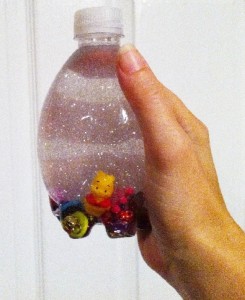 Easy Peasy DIY Parenting Tools
Easy Peasy DIY Parenting Tools
I-spy Water Jars, Quiet Bags, Calm-Me-Jars, Cozy Corners, Punch Bags, and more…Read more
 To a Toddler Sharing is a 4 Letter Word~MINE!
To a Toddler Sharing is a 4 Letter Word~MINE!
Almost from the moment a baby is born, parents teach them not to share. “No, no, sweetie. That’s mommy’s” and “That’s daddy’s, not yours” accompanied by the removal of whatever the forbidden item is are daily realities for little ones. This is unavoidable, of course, since bacteria-ridden keys don’t belong in little mouths and iphones don’t work well when soaked in drool.
But the challenge comes when our little ‘reflectors’ are expected to share their toys with anyone and everyone who takes a liking to them…Read more
 Spare the Rod: The Heart of the Matter
Spare the Rod: The Heart of the Matter
One of the hot-button issues when it comes to discipline and children is spanking, and the more Christian and conservative the audience, the more hot the debate becomes! There are no verses in the New Testament that support spanking, flogging, whipping, or otherwise hitting children. In the Old Testament there are…Read more
 Your Baby isn’t Trying to Annoy You; He’s Trying to Communicate! From the moment a child enters the world, they are trying to communicate. Crying, grunting, making eye contact, mirroring expressions, all of these things are the instinctive tools built into infants to reach out into a brand new world and make contact. They can do no more. It is entirely up to the parent to make the connection, to respond, to build those all-important ‘lines of communication’ that will be so vitally important to parents in later childhood. Communication is not something that just happens. It is not something that begins when a child becomes verbal, and it’s not a product of a child’s advancing maturity. Communication is a process, a relational building block, a result of intentional and responsive parenting. Read more
Your Baby isn’t Trying to Annoy You; He’s Trying to Communicate! From the moment a child enters the world, they are trying to communicate. Crying, grunting, making eye contact, mirroring expressions, all of these things are the instinctive tools built into infants to reach out into a brand new world and make contact. They can do no more. It is entirely up to the parent to make the connection, to respond, to build those all-important ‘lines of communication’ that will be so vitally important to parents in later childhood. Communication is not something that just happens. It is not something that begins when a child becomes verbal, and it’s not a product of a child’s advancing maturity. Communication is a process, a relational building block, a result of intentional and responsive parenting. Read more
 Tots to Teens~Communication through the Ages and Stages
Tots to Teens~Communication through the Ages and Stages
The evolution of children’s communication proceeds at a steady and relatively predictable pace, though the timing is influenced by factors such as individual personality, cognitive development, home environment, etc. Here’s what to expect through the ages and stages…
 Babes and Boundaries~A Gentle Parenting Perspective Gentle parenting doesn’t mean parenting without boundaries! Believe it or not, the foundation for discipline (guiding, leading, teaching…NOT punishment ) begins in the newborn and infancy stages. When parents respond quickly, consistently, and gently to their baby’s cries, the trust relationship that the parent is establishing becomes the cornerstone for later discipline. Boundaries need to be established for a child’s safety and growth into a successful citizen of our world. A child who is secure in the knowledge that he doesn’t have to fight to be heard or to have his needs met is more open and adaptable to limits. And when the ‘limit-setter’ is a person the child trusts, the enforcement of those boundaries becomes a matter of connection and communication instead of conflict and struggle. So, what might setting and enforcing boundaries using gentle parenting look like in real life? Read more
Babes and Boundaries~A Gentle Parenting Perspective Gentle parenting doesn’t mean parenting without boundaries! Believe it or not, the foundation for discipline (guiding, leading, teaching…NOT punishment ) begins in the newborn and infancy stages. When parents respond quickly, consistently, and gently to their baby’s cries, the trust relationship that the parent is establishing becomes the cornerstone for later discipline. Boundaries need to be established for a child’s safety and growth into a successful citizen of our world. A child who is secure in the knowledge that he doesn’t have to fight to be heard or to have his needs met is more open and adaptable to limits. And when the ‘limit-setter’ is a person the child trusts, the enforcement of those boundaries becomes a matter of connection and communication instead of conflict and struggle. So, what might setting and enforcing boundaries using gentle parenting look like in real life? Read more
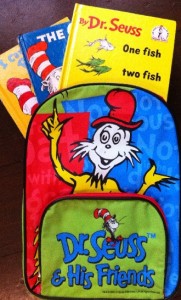 Parenting in Public~What’s in Your Quiet Bag? More and more public places are becoming child un-friendly with snarky signs saying they’ll give your child an espresso and a pony if you don’t control him or charge you extra if you dare to enter their establishment and support their business with your hard-earned money or even flat out ban you altogether if you bring ‘the beast’ out in public with you! So what’s a parent to do? Read more
Parenting in Public~What’s in Your Quiet Bag? More and more public places are becoming child un-friendly with snarky signs saying they’ll give your child an espresso and a pony if you don’t control him or charge you extra if you dare to enter their establishment and support their business with your hard-earned money or even flat out ban you altogether if you bring ‘the beast’ out in public with you! So what’s a parent to do? Read more
 Discipline & Behavior via Dr. Sears
Discipline & Behavior via Dr. Sears
You probably never thought of attachment tools, such as breastfeeding and babywearing, as being acts of discipline, but they are. Attachment parenting is like immunizing your child against emotional diseases later on. Your knowledge of your child becomes like a sixth sense enabling you to anticipate and control situations to keep your kids out of trouble. Discipline is based on building the right relationship with a child more than using the right techniques.
 Parenting toddlers made simple. via T.E.A.C.H. Through Love
Parenting toddlers made simple. via T.E.A.C.H. Through Love
Toddlers can be loud, boisterous, erratic, funny, messy, witty and smart all at the same time. They soak up everything they see and hear and that includes our reactions to their actions.
What Children Need Most When They Deserve It The Least via Happy Families
Parents prefer not to have their authority questioned. So rather than considering why a child may be resisting, they up the ante, doing their best puffer-fish impersonation, and make threats.
 Positive Parenting in Action: Exploration/Danger via Positive Parenting
Positive Parenting in Action: Exploration/Danger via Positive Parenting
Don’t mistake independence for defiance. Some toddlers are more strong-willed and independent than others. My first son was very mellow and content under my wing, while my second wanted independence early. He doesn’t want to hold my hand in parking lots (we’ll address that one!) because he says “I can walk by myself!”
With a healthy relationship based on open, honest communication, issues can be addressed as they arise and in a respectful and timely manner instead of a teen feeling the need to go ‘underground’ with their behavior or problems. Here are some practical tips for raising teens in a respectful and peaceful manner.
 Gentle Discipline: So what DO you do? via The Path Less Taken
Gentle Discipline: So what DO you do? via The Path Less Taken
Some people, for any number of reasons, do not know about alternatives. They don’t know that there’s another way. Some people want to do things differently, and want to break their cycle, but they honestly do not know where to start.
 Proactive Discipline and Well-behaved Children via Gentle Christian Mothers
Proactive Discipline and Well-behaved Children via Gentle Christian Mothers
Most people seem to think that physical punishment is the only way to elicit good behavior and assume that children who aren’t given prompt and regular spankings will be out of control “monsters”. Well, my kids are not perfect little robots. They have to be reminded to do things and they fight with each other. But my focus is not so much on obedience (do what I say right now!) as you might have expected. Instead my focus is on raising kids who are generally polite and content and care about how those around them feel. And that’s what I’ve got, kids who are noticeably considerate to adults and other children alike.
 6 Steps to Stop Yelling Dr. Laura Markham/Aha Parenting.com
6 Steps to Stop Yelling Dr. Laura Markham/Aha Parenting.com
We all know that our kids respond better if we don’t yell. Instead of escalating a difficult situation, if we can stay calm, it settles everyone else down. Our relationship with our child strengthens. They cooperate more. They start to control their own emotions more. Bottom line: How can you expect your child to control his own emotions if you don’t control yours?
 The One Thing You Can Do That Will Drastically Improve Your Interactions with Children via Real Child Development
The One Thing You Can Do That Will Drastically Improve Your Interactions with Children via Real Child Development
If there was one thing you could do differently that would drastically improve your interactions with children would you want to know? Would you like to know the key that would increase cooperation, reduce tantrums, fighting and negative behavior?
 Gems via Mothering by Grace
Gems via Mothering by Grace
This is a FAST way of making your child feel loved, valued and secure. GEMs help your kids feel affirmed and noticed, so their need to get your attention in negative ways decreases. Your energy levels will rise as you enjoy your child and remember what it’s all about. By focusing on your child and meeting their emotional needs for connection you are actually taking care of yourself at the same time. It takes only a few minutes to have a GEM, yet the positive effects last for ages.
 Why Spanking is Never Okay via Peaceful Parenting
Why Spanking is Never Okay via Peaceful Parenting
Scientific research shows that physical punishment does not work in the long run, is associated with an increased risk for many behavioral and psychological problems, and is simply unnecessary given that we have non-violent discipline techniques that are very effective.
 Gentle Discipline Toolbox via Dulce de Leche
Gentle Discipline Toolbox via Dulce de LecheGentle, effect tools for your parenting toolbox!
Related links:
November 21, 2011 | Categories: adolescence, attachment parenting, babywearing, Bible, birth, breastfeeding, children's books, Christian, Christian parenting, cosleeping, gentle discipline, gentle parenting, Jesus, parenting guide, positive discipline | Tags: adolescence, attachment parenting, babywearing, Bible, breastfeeding, childhood, children, Christian, Christian parenting, discipline, gentle discipline, gentle parenting, Jesus, newborn, parenting, play, positive, positive parenting, rebellion | 38 Comments »  Award-winnning author, L.R.Knost, is the founder and director of the children's rights advocacy and family consulting group, Little Hearts/Gentle Parenting Resources, and Editor-in-Chief of Holistic Parenting Magazine. Books by L.R.Knost include Whispers Through Time: Communication Through the Ages and Stages of Childhood ; Two Thousand Kisses a Day: Gentle Parenting Through the Ages and Stages ; The Gentle Parent: Positive, Practical, Effective Discipline ; and Jesus, the Gentle Parent: Gentle Christian Parenting the first four books in the Little Hearts Handbook gentle parenting series, and children’s picture books Petey’s Listening Ears and the soon-to-be-released Grumpykins series.
Award-winnning author, L.R.Knost, is the founder and director of the children's rights advocacy and family consulting group, Little Hearts/Gentle Parenting Resources, and Editor-in-Chief of Holistic Parenting Magazine. Books by L.R.Knost include Whispers Through Time: Communication Through the Ages and Stages of Childhood ; Two Thousand Kisses a Day: Gentle Parenting Through the Ages and Stages ; The Gentle Parent: Positive, Practical, Effective Discipline ; and Jesus, the Gentle Parent: Gentle Christian Parenting the first four books in the Little Hearts Handbook gentle parenting series, and children’s picture books Petey’s Listening Ears and the soon-to-be-released Grumpykins series.
10 Steps to Surviving the First Three Months with a Newborn
[Reprinted from Two Thousand Kisses a Day: Gentle Parenting Through the Ages and Stages by L.R.Knost. Whispers Through Time: Communication Through the Ages and Stages of Childhood; The Gentle Parent: Positive, Practical, Effective Discipline; and Jesus, the Gentle Parent: Gentle Christian Parenting also now available on Amazon and through other major retailers.]
~~~~~~~~~~~~~~~~~~~~~
 So, your precious baby has finally arrived! After a perfect pregnancy and blissful labor and delivery, you’ve come home (in your pre-pregnancy clothes, of course!) with your beautiful baby, ready to start life as the perfect parents of a perfect child. Yeah, right! Actually, after a pregnancy in which you threw up more times than you can count and yet still managed to gain an embarrassing amount of weight, and where your feet swelled to unrecognizable lumps at the bottom of your legs, you finally suffered through a hideously long, painful labor and delivery only to arrive home (in your largest maternity outfit which barely fit!) with a screaming, vomiting, miniature human being who can’t tell you why he’s upset and who poops what can only be described as TAR! What are you going to do now?!?
So, your precious baby has finally arrived! After a perfect pregnancy and blissful labor and delivery, you’ve come home (in your pre-pregnancy clothes, of course!) with your beautiful baby, ready to start life as the perfect parents of a perfect child. Yeah, right! Actually, after a pregnancy in which you threw up more times than you can count and yet still managed to gain an embarrassing amount of weight, and where your feet swelled to unrecognizable lumps at the bottom of your legs, you finally suffered through a hideously long, painful labor and delivery only to arrive home (in your largest maternity outfit which barely fit!) with a screaming, vomiting, miniature human being who can’t tell you why he’s upset and who poops what can only be described as TAR! What are you going to do now?!?
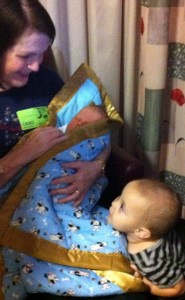 First, call your mommy! No, really, if you have a mom or a grandma or an aunt or a good friend who has any experience with babies, ask for help! As long as there have been babies being born, there have been women gathering around to help new mamas through those first intense weeks with a newborn. Experienced helpers can make all the difference in how well you survive the sleepless nights, crazy hormones, and vast uncertainties that come with being a new parent.
First, call your mommy! No, really, if you have a mom or a grandma or an aunt or a good friend who has any experience with babies, ask for help! As long as there have been babies being born, there have been women gathering around to help new mamas through those first intense weeks with a newborn. Experienced helpers can make all the difference in how well you survive the sleepless nights, crazy hormones, and vast uncertainties that come with being a new parent.
Beware, though, the experienced helpers who are a bit too helpful and try to push you out of the way even to the extent of trying to guilt you into leaving your baby behind to go on a walk or a date-night ‘for the good of your marriage.’ In the first place, having to leave your baby behind to preserve your marriage isn’t a great precedent to set with your husband. You two are in this together and setting a precedent of family first is a good idea! And secondly, the whole point of having help is not only for you to recover, but also so you can become experienced yourself in taking care of your baby. And on that note…
Second, while accepting help is vital, make sure that everyone knows that this baby is YOUR baby and YOU will decide what is best for you and your child. Listen to all the advice; take what makes sense to you; and chuck the rest. Let your helpers do the housework and the cooking and the errands while you take care of and get to know the new little addition to your family. If your instincts tell you to hold your baby, even while she sleeps, then hold your baby even while she sleeps! If your instincts tell you to nurse your crying baby even though you just nursed fifteen minutes ago, then nurse your baby! God gave you those instincts for a reason, so don’t ignore them!
Third, I know we’ve all heard the ‘sleep when your baby is sleeping’ advice. Listen to that advice! Short little naps may not seem all that helpful in theory, but they can be lifesavers when getting used to the rigors of new parenthood. And keep reminding yourself that it will get better, because it will!
Fourth, whether you’ve chosen to breastfeed or bottle feed, expect your little one to eat erratically right at first. Remember, babies nutritional needs were met with a constancy and lack of effort in utero that can’t be fully replicated outside the womb. Their tummies are only about the size of a walnut in the first days, so they can’t eat enough at a feeding to last them more than two or three hours at most, and often far less! Also, if you’re breastfeeding it’s common to worry that your baby isn’t getting enough milk, but if you keep in mind how itty bitty their little tummies are, you’ll realize that it doesn’t take much to fill them up. Things to consider with breastfeeding are getting a good latch and establishing your supply, among others, and it’s often helpful to consult a lactation specialist for guidance. There are excellent resources available in most communities through your local hospital as well as online resources such as La Leche League and Kellymom.com.
about the size of a walnut in the first days, so they can’t eat enough at a feeding to last them more than two or three hours at most, and often far less! Also, if you’re breastfeeding it’s common to worry that your baby isn’t getting enough milk, but if you keep in mind how itty bitty their little tummies are, you’ll realize that it doesn’t take much to fill them up. Things to consider with breastfeeding are getting a good latch and establishing your supply, among others, and it’s often helpful to consult a lactation specialist for guidance. There are excellent resources available in most communities through your local hospital as well as online resources such as La Leche League and Kellymom.com.
Fifth, while bathing baby may be fun, it really isn’t necessary and might be rather traumatic for them. ‘Topping and tailing’ is a term that means taking a warm, wet cloth (no soap) and gently washing their eyes (inner corner to outer corner to avoid infection), face, ears, head, and neck, and then washing their bottom, being careful to clean out all the little cracks and crevices. Follow that with cord care (gently cleaning the cord area with a cotton swab moistened with a bit of alcohol or just water), and you’re done!
 Sixth, birth is a huge transition for a baby. From a warm, dark, weightless environment where all their needs are met, sounds are muffled, and mama’s heartbeat lulls them to sleep, they are abruptly ejected into a cold, loud, bright world where they experience hunger and discomfort and loneliness and fear for the first time. You can help your little one cope by easing the transition for him. Keeping the lights a bit dimmer and the sounds a bit more muted right at first is helpful in welcoming your baby to your world. Also, it’s helpful to wear your baby in those first transitional weeks (and often far longer when you discover how convenient it is!). Babywearing is a term that refers to using a baby carrier, wrap, or sling to keep your baby close to you where he can hear your heartbeat and feel your warmth and closeness in an approximation of your womb. All of these things will help to reduce your baby’s stress as he acclimates to his new environment, and a less stressed baby tends to result in a less stressed mommy. And, don’t forget daddy! Babywearing is a wonderful way for daddies to bond with their babies. Studies have shown that close physical contact between fathers and their infants causes a hormonal response similar to when a mother gives birth, increasing the nurturing response naturally and paving the way for a healthy attachment and strong parent/child relationship.
Sixth, birth is a huge transition for a baby. From a warm, dark, weightless environment where all their needs are met, sounds are muffled, and mama’s heartbeat lulls them to sleep, they are abruptly ejected into a cold, loud, bright world where they experience hunger and discomfort and loneliness and fear for the first time. You can help your little one cope by easing the transition for him. Keeping the lights a bit dimmer and the sounds a bit more muted right at first is helpful in welcoming your baby to your world. Also, it’s helpful to wear your baby in those first transitional weeks (and often far longer when you discover how convenient it is!). Babywearing is a term that refers to using a baby carrier, wrap, or sling to keep your baby close to you where he can hear your heartbeat and feel your warmth and closeness in an approximation of your womb. All of these things will help to reduce your baby’s stress as he acclimates to his new environment, and a less stressed baby tends to result in a less stressed mommy. And, don’t forget daddy! Babywearing is a wonderful way for daddies to bond with their babies. Studies have shown that close physical contact between fathers and their infants causes a hormonal response similar to when a mother gives birth, increasing the nurturing response naturally and paving the way for a healthy attachment and strong parent/child relationship.
Seventh, there is a big divide in parenting circles between the ‘co-sleepers’ and the ‘crib-sleepers’ so be aware that whichever choice you make will probably be challenged by more than one of your friends or relatives or even complete strangers who seem to have no issues with giving advice to someone they don’t know! Bottom line, if you choose to co-sleep, check here for ‘safe co-sleeping’ options, and then follow your instincts! If you choose to put your little one in a crib or bassinet, do yourself a favor and put it next to your bed to reduce your travel time in the middle of the night. You’ll thank me, I promise!
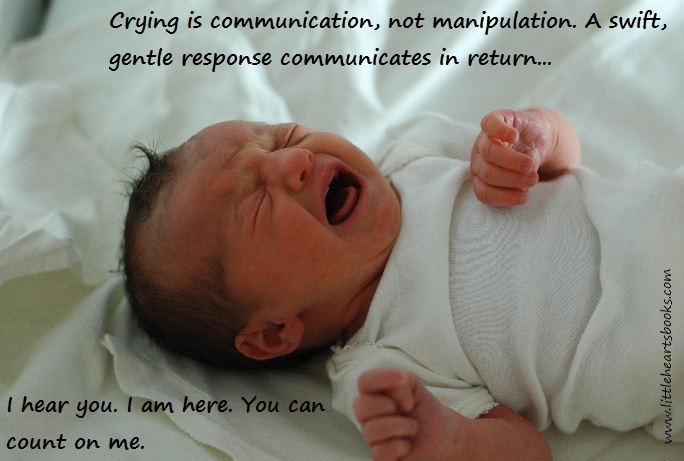 Eighth, your baby is completely and totally helpless in every way. Her main mode of communication is crying. Medical experts agree that it isn’t possible to spoil a newborn, and you are just at the beginning stages of building a trust relationship, so respond promptly to your little one’s cries! Your immediate response to your baby’s needs will help her begin to learn that she can count on you when she needs you and that she doesn’t have to ‘fight’ for your attention. Babies left to cry-it-out often do sleep through the night sooner than babies whose needs are responded to because they have learned to give up on their needs being met. But that ‘gain’ of sleeping through the night is accomplished at the ‘loss’ of trust, and the long-term consequences of a child giving up on her parents simply aren’t worth it.
Eighth, your baby is completely and totally helpless in every way. Her main mode of communication is crying. Medical experts agree that it isn’t possible to spoil a newborn, and you are just at the beginning stages of building a trust relationship, so respond promptly to your little one’s cries! Your immediate response to your baby’s needs will help her begin to learn that she can count on you when she needs you and that she doesn’t have to ‘fight’ for your attention. Babies left to cry-it-out often do sleep through the night sooner than babies whose needs are responded to because they have learned to give up on their needs being met. But that ‘gain’ of sleeping through the night is accomplished at the ‘loss’ of trust, and the long-term consequences of a child giving up on her parents simply aren’t worth it.
Ninth, baby yourself! Whether you’ve had a c-section or a vaginal birth, your body has been through the wringer; your hormones are all over the place; and your lack of sleep is not helping matters! Have someone make you a ‘survival basket’ with water bottles, granola bars, minty gum, hand sanitizer, diapers, baby wipes, burp rags, and, most importantly, chocolate! It needs to be small and light enough for you to take from room to room with you while carrying your baby. Also, have someone make a comfy area in your living room for you to nurse (with your survival basket within reach!) and a changing area so you don’t have to go back and forth to the bedroom or nursery throughout the day. Take showers when you can. Accept casseroles and other offerings of meals from friends and church members and co-workers. And, if you don’t have help for the housework, just do the bare minimum so you can rest and recover and focus on getting to know your precious new baby!
Tenth, baby your marriage! This is a huge, huge, huge transition for you and your husband, so both of you apologize to each other in advance for any temper tantrums, thoughtless words, or unmet needs that might (will!) occur in the foreseeable future. You are going from ‘the two of us’ to ‘we three’ and, just as with anything else, change isn’t easy. Husbands, it’s not about you right now, period. Yes, you have your own issues to deal with in becoming a parent for the first time, but you need to put that aside for the first weeks and concentrate on your wife and child. Your wife isn’t just having to deal with becoming a mommy, but her body has been through an incredible transition during the previous nine months followed by the trauma of labor and delivery followed by crashing hormones, the trials of learning to breastfeed (or deal with engorgement issues if choosing to bottle feed), and the exhaustion of dealing with a newborn’s erratic sleep patterns. If she’s also had a c-section, you can add major abdominal surgery to that list! So, husbands, put your own issues aside and baby your wife and baby for the time being! Wives, a little verbal acknowledgement goes a long way with husbands, so try to muster up enough energy to tell your husband that you appreciate him and understand that he is trying to figure out this new life just like you are, and assure him that eventually you will be you again! (Yes, you will. It just takes time!)
going from ‘the two of us’ to ‘we three’ and, just as with anything else, change isn’t easy. Husbands, it’s not about you right now, period. Yes, you have your own issues to deal with in becoming a parent for the first time, but you need to put that aside for the first weeks and concentrate on your wife and child. Your wife isn’t just having to deal with becoming a mommy, but her body has been through an incredible transition during the previous nine months followed by the trauma of labor and delivery followed by crashing hormones, the trials of learning to breastfeed (or deal with engorgement issues if choosing to bottle feed), and the exhaustion of dealing with a newborn’s erratic sleep patterns. If she’s also had a c-section, you can add major abdominal surgery to that list! So, husbands, put your own issues aside and baby your wife and baby for the time being! Wives, a little verbal acknowledgement goes a long way with husbands, so try to muster up enough energy to tell your husband that you appreciate him and understand that he is trying to figure out this new life just like you are, and assure him that eventually you will be you again! (Yes, you will. It just takes time!)
Final thoughts: One of the things that has kept me going through giving birth to six children (and losing several others along the way) is the assurance that ‘this too shall pass.’ As with all changes in life, it takes time to adjust, but reminding yourself that this ‘will pass,’ and you will adjust, and life will go on is very, very helpful! Also, take time to enjoy the little things–the sweet smell of your newborn’s tiny head, the soft sounds of his breathing as he sleeps, the sight of your spouse staring into your beautiful baby’s eyes–because too soon this time will pass and these precious moments will become mere memories. Congratulations and God bless!
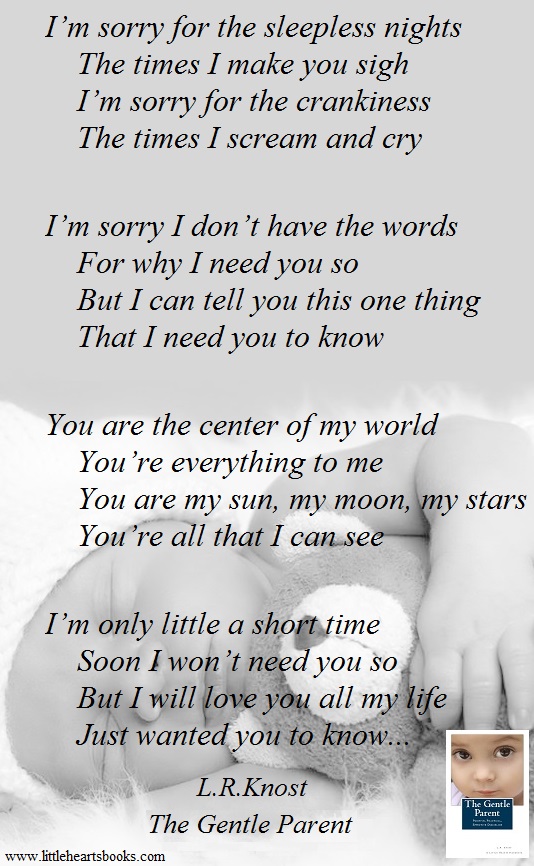 Related links:
Related links:
Love in the Time of Cosleeping
A Boy, A Girl, and A Baby~Journey to Gentle Parenting
300+ Nicknames for Your Babykins…Doodlebug…Snugglebunny…
200 Ways to Bless Your Children with a Happy Childhood
Babywearing Basics Resource Guide
Breastfeeding, Babywearing, and Bouncing Back into Shape after Baby
Practical, Gentle, Effective Discipline
Four Ways Attachment Parenting Can Reduce the Risk of SIDS
The Science of Sleep: Newborns
Where Did You Learn Love, Child?
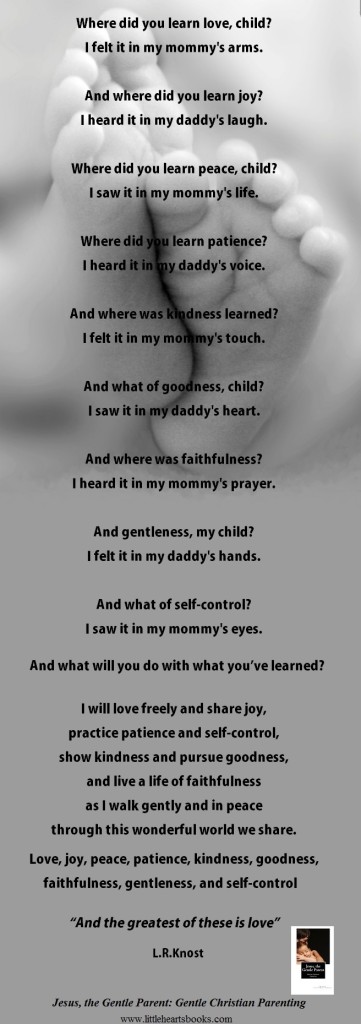
November 20, 2011 | Categories: attachment parenting, babywearing, breastfeeding, Christian, cosleeping, natural parenting, newborn | Tags: attachment parenting, babywearing, breastfeeding, Christian, Christian parenting, cosleeping, gentle discipline, gentle parenting, natural parenting, newborn, positive parenting | 35 Comments »  Award-winnning author, L.R.Knost, is the founder and director of the children's rights advocacy and family consulting group, Little Hearts/Gentle Parenting Resources, and Editor-in-Chief of Holistic Parenting Magazine. Books by L.R.Knost include Whispers Through Time: Communication Through the Ages and Stages of Childhood ; Two Thousand Kisses a Day: Gentle Parenting Through the Ages and Stages ; The Gentle Parent: Positive, Practical, Effective Discipline ; and Jesus, the Gentle Parent: Gentle Christian Parenting the first four books in the Little Hearts Handbook gentle parenting series, and children’s picture books Petey’s Listening Ears and the soon-to-be-released Grumpykins series.
Award-winnning author, L.R.Knost, is the founder and director of the children's rights advocacy and family consulting group, Little Hearts/Gentle Parenting Resources, and Editor-in-Chief of Holistic Parenting Magazine. Books by L.R.Knost include Whispers Through Time: Communication Through the Ages and Stages of Childhood ; Two Thousand Kisses a Day: Gentle Parenting Through the Ages and Stages ; The Gentle Parent: Positive, Practical, Effective Discipline ; and Jesus, the Gentle Parent: Gentle Christian Parenting the first four books in the Little Hearts Handbook gentle parenting series, and children’s picture books Petey’s Listening Ears and the soon-to-be-released Grumpykins series.
A September to Remember: I’ve Gone to the Dork Side
Such a sweet ‘attic find’ from Zoie @ TouchstoneZ!
~~I’ve Gone to the Dork Side~~
Nat has a fairly decent obsession with Legos right now. So, we took the family to a Lego convention in San Jose. Being Legos and being in Silicon Valley, the convention was filled with a variety of nerd species. There were steam punks, Star Wars and Star Trek (avoiding one another of course) and even a few self-created Sci-fi-ish creatures. The majority were those I affectionately call garden variety geeks.
I love nerds. I wish when I was younger that I had recognized their coolness. I would have made much healthier choices in boyfriends and girlfriends if I had gone to the dork side earlier. Most of the kids in my circle were more concerned with vying for social status than in being kind or understanding of other people. It was not something I enjoyed, so I hopped around from friend to friend every few weeks when the back-biting got to be too mean for me. I have found most geeks to be genuinely interested in understanding one another’s diversity in a more organic way than the garden variety un-geek. There are of course many exceptions on both sides of wherever that arbitrary dork-line is drawn. I tend to be attracted to those who have that quality of acceptance and really, even the un-geeks are still freaks, they’re just better at appearing normal (cliché alert: whatever normal is)
I’m married to a self-named geek. I’m not entirely certain that his high school classmates would agree if his yearbook is any indication. But he does have the hallmarks, such as, being a techie, loving SciFi, and having a few embarrassing photos of his 12 year old self, involving a Blues Brothers hat and shorty-short shorts. Aside from that, he’s self-confident although quiet. He’s very open to his much more emotional wife’s hare-brained ideas about crunchy parenting and green living (except backyard chickens, but I’m working on that.) He’s down with wearing a Star Wars shirt and rocking an Ergo.
We went from display to display of intricate lego builds with Nat extolling his wonderment. Gan had an excellent view from the carrier on his Dad’s back, so was also entranced. Bud was getting squirmy and needed a feed, though. I spotted an empty hotel conference room style chair pushed against the wall and quickly pounced on it so I wouldn’t have to breastfeed sitting on the floor. Sitting on the floor to breastfeed can be nice because fewer people glance at me (unless I position myself accidentally at a hallway junction or something, as I’ve been known to do when distracted by a rooting bub) But I’d prefer not to directly expose myself or my nursling to the unknown level of cleanliness of or the industrial cleaners used on a hotel conference hall carpet.
 My View of Lego Festival
My View of Lego Festival
So, I breastfed on this hotel chair with my back to the wall, sandwiched between some worn out grandparents and I noticed something. I was being looked at. A lot. But, not in the way you’re probably thinking. It certainly wasn’t something I was used to.
There were many moms there trailing behind their gangly teen sons who overtopped them by a foot. And they would each smile fondly as they passed by. I could see in their faces that they remembered their boys as babes at the breast. I felt uplifted by these wordless connections. It’s not often I have such an overwhelmingly supportive experience breastfeeding in a crowd of strangers.
I smiled at my own nursling and imagined him overtopping me by a foot by the time he’s a teenager. I hope I’m lucky enough to trail behind him at a Lego festival and smile wistfully at another mama breastfeeding a future dork.
Thank you to Zoie @ TouchstoneZ for her generous contributions to ~A September to Remember~ and don’t forget to check out her blog!
September 17, 2011 | Categories: adolescence, attachment parenting, babywearing, breastfeeding, life, natural parenting, teens | Tags: attachment parenting, babywearing, breastfeeding, childhood, gentle parenting, parenting, positive parenting, teens | 2 Comments »  Award-winnning author, L.R.Knost, is the founder and director of the children's rights advocacy and family consulting group, Little Hearts/Gentle Parenting Resources, and Editor-in-Chief of Holistic Parenting Magazine. Books by L.R.Knost include Whispers Through Time: Communication Through the Ages and Stages of Childhood ; Two Thousand Kisses a Day: Gentle Parenting Through the Ages and Stages ; The Gentle Parent: Positive, Practical, Effective Discipline ; and Jesus, the Gentle Parent: Gentle Christian Parenting the first four books in the Little Hearts Handbook gentle parenting series, and children’s picture books Petey’s Listening Ears and the soon-to-be-released Grumpykins series.
Award-winnning author, L.R.Knost, is the founder and director of the children's rights advocacy and family consulting group, Little Hearts/Gentle Parenting Resources, and Editor-in-Chief of Holistic Parenting Magazine. Books by L.R.Knost include Whispers Through Time: Communication Through the Ages and Stages of Childhood ; Two Thousand Kisses a Day: Gentle Parenting Through the Ages and Stages ; The Gentle Parent: Positive, Practical, Effective Discipline ; and Jesus, the Gentle Parent: Gentle Christian Parenting the first four books in the Little Hearts Handbook gentle parenting series, and children’s picture books Petey’s Listening Ears and the soon-to-be-released Grumpykins series.
A September to Remember: Making Space
This week’s guest post is from Melissa of The New Mommy Files! Don’t forget to check out her site after you fall in love with her post :0)
 |
| Photo Used by Creative Commons License
Credit: Kevin Harber (Kevin H.) on Flickr. |
| Taking some time to climb the stairs at the mall
before picking up groceries |
- Leave plenty of extra time to get things done, so that it’s easy to move at Annabelle’s pace without becoming stressed or frustrated.
- Allow time before and after going into a place where Annabelle cannot safely walk about (such as a crowded grocery store), to allow her to walk and explore. I let her wander around on the lawn outside the grocery store for awhile before going inside, for example.
- Have more than one plan. When we go out shopping, I bring a sling and our shopping cart cover with a favorite object and a snack tucked inside the pocket. When Annabelle tires of riding in the cart, I place her in the sling instead. This respects her need for a change of scenery, and also gives her two separate places from which she can have a bird’s eye view. We don’t use a stroller, as it keeps her from being able to interact with me and others around us. When we’re in a place where she can safely walk, I allow her to do so.
- Empathize and speak respectfully. Occasionally Annabelle becomes frustrated at points when it’s hard for me to step away and tend to her immediately, such as when my groceries are already half checked and I need to pay for them. When this happens, I simply do my best to acknowledge her needs and let her know that I will meet them just as soon as I can. Her feelings of frustration are valid and she needs to know that she is heard.
 Melissa started blogging at The New Mommy Files when her firstborn was just three months old, but has found that no matter how familiar the mommy label becomes there is always something new to discover. She shares stories, thoughts, ideas, and inspiration from her journey on facebook and twitter as well as on her blog. In addition to mothering, topics that come up often include Montessori philosophy, elimination communication and cloth diapering, veganism, and finding a rhythm and balance in everyday life.
Melissa started blogging at The New Mommy Files when her firstborn was just three months old, but has found that no matter how familiar the mommy label becomes there is always something new to discover. She shares stories, thoughts, ideas, and inspiration from her journey on facebook and twitter as well as on her blog. In addition to mothering, topics that come up often include Montessori philosophy, elimination communication and cloth diapering, veganism, and finding a rhythm and balance in everyday life.
September 16, 2011 | Categories: attachment parenting, babywearing, breastfeeding, children's books, cosleeping, gentle parenting, life | Tags: attachment parenting, babywearing, breastfeeding, childhood, children, cosleeping, gentle discipline, sacrificial parenting | 4 Comments »  Award-winnning author, L.R.Knost, is the founder and director of the children's rights advocacy and family consulting group, Little Hearts/Gentle Parenting Resources, and Editor-in-Chief of Holistic Parenting Magazine. Books by L.R.Knost include Whispers Through Time: Communication Through the Ages and Stages of Childhood ; Two Thousand Kisses a Day: Gentle Parenting Through the Ages and Stages ; The Gentle Parent: Positive, Practical, Effective Discipline ; and Jesus, the Gentle Parent: Gentle Christian Parenting the first four books in the Little Hearts Handbook gentle parenting series, and children’s picture books Petey’s Listening Ears and the soon-to-be-released Grumpykins series.
Award-winnning author, L.R.Knost, is the founder and director of the children's rights advocacy and family consulting group, Little Hearts/Gentle Parenting Resources, and Editor-in-Chief of Holistic Parenting Magazine. Books by L.R.Knost include Whispers Through Time: Communication Through the Ages and Stages of Childhood ; Two Thousand Kisses a Day: Gentle Parenting Through the Ages and Stages ; The Gentle Parent: Positive, Practical, Effective Discipline ; and Jesus, the Gentle Parent: Gentle Christian Parenting the first four books in the Little Hearts Handbook gentle parenting series, and children’s picture books Petey’s Listening Ears and the soon-to-be-released Grumpykins series.
A September to Remember: I am a good mom, and other reasons labels don’t work…
September 9, 2011 | Categories: attachment parenting, babywearing, birth, breastfeeding, cosleeping, family, gentle discipline, gentle parenting, natural parenting, newborn, positive discipline | Tags: attachment parenting, babywearing, breastfeeding, childhood, children, cosleeping, gentle discipline, gentle parenting, play, positive parenting, sacrificial parenting | Leave A Comment »  Award-winnning author, L.R.Knost, is the founder and director of the children's rights advocacy and family consulting group, Little Hearts/Gentle Parenting Resources, and Editor-in-Chief of Holistic Parenting Magazine. Books by L.R.Knost include Whispers Through Time: Communication Through the Ages and Stages of Childhood ; Two Thousand Kisses a Day: Gentle Parenting Through the Ages and Stages ; The Gentle Parent: Positive, Practical, Effective Discipline ; and Jesus, the Gentle Parent: Gentle Christian Parenting the first four books in the Little Hearts Handbook gentle parenting series, and children’s picture books Petey’s Listening Ears and the soon-to-be-released Grumpykins series.
Award-winnning author, L.R.Knost, is the founder and director of the children's rights advocacy and family consulting group, Little Hearts/Gentle Parenting Resources, and Editor-in-Chief of Holistic Parenting Magazine. Books by L.R.Knost include Whispers Through Time: Communication Through the Ages and Stages of Childhood ; Two Thousand Kisses a Day: Gentle Parenting Through the Ages and Stages ; The Gentle Parent: Positive, Practical, Effective Discipline ; and Jesus, the Gentle Parent: Gentle Christian Parenting the first four books in the Little Hearts Handbook gentle parenting series, and children’s picture books Petey’s Listening Ears and the soon-to-be-released Grumpykins series.
A September to Remember: Memories
 This has been such a full year for our family. I find myself wondering often, though, about my little boy. At two and a half, what will he remember of this year? Anything?
This has been such a full year for our family. I find myself wondering often, though, about my little boy. At two and a half, what will he remember of this year? Anything?
Will he remember the wonderful four months we spent with his grandma, grandpa, and four aunties this summer? Will he remember the time he got to spend with his daddy during the day, the fun they had together, the way it strengthened the bond they already shared?
Will he remember any of the first three houses we’ve lived in so far this year? His very first home in Ottawa? The beautiful house in Manitoba, with acres of land to run around on and a bountiful garden that he watched us dig, till, plant, water, weed and harvest? Will he remember the place we’ve called home since our arrival in Vancouver this fall, the place we had hoped to live in for our four years here, the place we will be saying goodbye to in only a couple short weeks?
What of the other people who have been a part of his life? How long will he continue to remember his first friend Luke? Will he recognize those relatives we see rarely – great grandparents, great aunts and uncles, cousins? If only we could all be together, always, instead of so far flung from each other.
Will he remember those experiences that he talks of so often and so fondly right now? Trips to the aquarium, the farm, the theatre. Riding the train at the mall. Dancing with his mom in the snow at the park, his hands buried in her sleeves to keep warm. Visits to the midwife, listening to his baby brother or sister’s heartbeat, endless conversations – “talk more about the baby, Mom!” Will he remember that tiny baby being born?
What will he remember?
What will he forget?
Sometimes I feel sad over the thought of all that will slip from his mind over the years. I’ve long felt that way over my own life. A box full of journals from my teenage years doesn’t seem to be enough. What about the little everyday things, the moments I failed to record, the milestones I didn’t notice at the time, all the things I have already forgotten? I wish I could record all of these happy moments of his own life, both for his sake and for mine. I want him to remember, and I want to remember them myself.
Other times, though, I worry about what he will remember. Will he remember that I sat by his bed every night, singing to him as he drifted off to sleep? Or will he remember instead the times I spoke harshly, wanting him to just go to sleep so I could go do other things (as though washing the supper dishes was more important than being a comforting presence to my son)? Will he remember the trips to the park, the library, the farm – or will he remember instead the times I was overly anxious to get back to the comfort of our home, rushing him along instead of allowing him to linger and explore as long as he liked? Will he remember the times I dealt with him lovingly, patiently, respectfully, discipling him into greater maturity – or will he remember instead my moments of failure as a parent, treating him roughly, speaking to him harshly, failing to hear him, allowing my selfishness to come first, badgering him into submission rather than discipling him into true obedience?
Sad that he will forget, worried that he will remember, I become increasingly conscious of the memories I am creating for this little boy, aware of their significance.
And so we bake gingerbread moose and shortbread trains. He kneads his own small piece of dough as we make our weekly bread together. We avoid daily television and instead snuggle together for a special movie treat. We read endless piles of books together. I warm up a glass of chocolate milk when he wakes one night, allowing him to climb into our bed and join us as we sip our own hot cocoa. I offer comfort in a daily routine and excitement in the occasional deviation from it.
And we talk. Days filled with conversation, recalling the good times that have passed, praising the people we have grown to love, anticipating the good that lies ahead.
This, in hopes that some day down the road, he’ll say, Mom, remember when…, and I will smile, because he remembers, and I remember, and the things we remember are all the best moments of our lives.
__________________
 Cynthia is the mother of two little boys, an inquisitive preschooler and an energetic toddler. She blogs at The Hippie Housewife, where she shares her thoughts on attachment parenting, natural living, life as a Jesus-follower, and more, all tied together through her journey towards a more intentional life.
Cynthia is the mother of two little boys, an inquisitive preschooler and an energetic toddler. She blogs at The Hippie Housewife, where she shares her thoughts on attachment parenting, natural living, life as a Jesus-follower, and more, all tied together through her journey towards a more intentional life.
This article was previously published on The Hippie Housewife.
September 2, 2011 | Categories: attachment parenting, babywearing, Bible, birth, Christian parenting, gentle parenting, Jesus | Tags: attachment parenting, babywearing, bedtime stories, Bible, childhood, Christian parenting, gentle parenting, Jesus, positive parenting | Leave A Comment »  Award-winnning author, L.R.Knost, is the founder and director of the children's rights advocacy and family consulting group, Little Hearts/Gentle Parenting Resources, and Editor-in-Chief of Holistic Parenting Magazine. Books by L.R.Knost include Whispers Through Time: Communication Through the Ages and Stages of Childhood ; Two Thousand Kisses a Day: Gentle Parenting Through the Ages and Stages ; The Gentle Parent: Positive, Practical, Effective Discipline ; and Jesus, the Gentle Parent: Gentle Christian Parenting the first four books in the Little Hearts Handbook gentle parenting series, and children’s picture books Petey’s Listening Ears and the soon-to-be-released Grumpykins series.
Award-winnning author, L.R.Knost, is the founder and director of the children's rights advocacy and family consulting group, Little Hearts/Gentle Parenting Resources, and Editor-in-Chief of Holistic Parenting Magazine. Books by L.R.Knost include Whispers Through Time: Communication Through the Ages and Stages of Childhood ; Two Thousand Kisses a Day: Gentle Parenting Through the Ages and Stages ; The Gentle Parent: Positive, Practical, Effective Discipline ; and Jesus, the Gentle Parent: Gentle Christian Parenting the first four books in the Little Hearts Handbook gentle parenting series, and children’s picture books Petey’s Listening Ears and the soon-to-be-released Grumpykins series.
Co-sleeping Safely~Is it possible? Decide for yourself!
 SIDS: The Latest Research on How Sleeping With Your Baby is Safe | Dr. Sears Official Website | Pare
SIDS: The Latest Research on How Sleeping With Your Baby is Safe | Dr. Sears Official Website | Pare
Dr. Sears is considered the leading authority on gentle/attachment parenting and is a proponent of co-sleeping. Here he examines the research linking decreased SIDS risks with the increase in co-sleeping rates. Dr. Sears~ “Here are some ways to educate parents on how to sleep safely with their baby.”
 Cosleeping and Biological Imperatives: Why Human Babies Do Not and Should Not Sleep Alone
Cosleeping and Biological Imperatives: Why Human Babies Do Not and Should Not Sleep Alone
“While many theories are flying around about the cause of SIDS, most focus on the deepness of sleep and how it affects the child’s breathing…Another theory which you may not be familiar with is that the crib mattress itself is to blame for SIDS cases…Arsenic, phosphorus and antimony are intentionally added to crib mattresses by the manufacturers as fire retardants. SIDS was very rare prior to the 1950s when these additives became standard.”
Related posts:
And Baby Makes Three~Surviving the First Three Months with a Newborn
Bizarre Anti-Cosleeping Ads in Milwaukee a Red Herring?
A Boy, A Girl, and A Baby~Journey to Gentle Parenting
August 9, 2011 | Categories: attachment parenting, babywearing, birth, breastfeeding, cosleeping, food, gentle parenting, natural parenting, newborn, parenting guide, pregnancy | Tags: attachment parenting, babywearing, birth, breastfeeding, childhood, children, cosleeping, gentle parenting, natural parenting, nature, newborn, positive parenting, pregnancy, sacrifice, sacrificial parenting | 8 Comments »  Award-winnning author, L.R.Knost, is the founder and director of the children's rights advocacy and family consulting group, Little Hearts/Gentle Parenting Resources, and Editor-in-Chief of Holistic Parenting Magazine. Books by L.R.Knost include Whispers Through Time: Communication Through the Ages and Stages of Childhood ; Two Thousand Kisses a Day: Gentle Parenting Through the Ages and Stages ; The Gentle Parent: Positive, Practical, Effective Discipline ; and Jesus, the Gentle Parent: Gentle Christian Parenting the first four books in the Little Hearts Handbook gentle parenting series, and children’s picture books Petey’s Listening Ears and the soon-to-be-released Grumpykins series.
Award-winnning author, L.R.Knost, is the founder and director of the children's rights advocacy and family consulting group, Little Hearts/Gentle Parenting Resources, and Editor-in-Chief of Holistic Parenting Magazine. Books by L.R.Knost include Whispers Through Time: Communication Through the Ages and Stages of Childhood ; Two Thousand Kisses a Day: Gentle Parenting Through the Ages and Stages ; The Gentle Parent: Positive, Practical, Effective Discipline ; and Jesus, the Gentle Parent: Gentle Christian Parenting the first four books in the Little Hearts Handbook gentle parenting series, and children’s picture books Petey’s Listening Ears and the soon-to-be-released Grumpykins series.
Wishes Week 2011~Wrapping it up & putting a bow on top!
Thank you to all of my awesome guests this week for Wishes Week 2011! You gave me a very special birthday gift I will never forget by sharing your wishes with me. Here’s a ((hug)) for each one of you! And now, the ‘wrap up’~

Glimpses My opening contribution to Wishes Week 2011~Glimpses of hope and healing

Meanderings by Rosemary Jones Gritty urban prose by one of my favorite writers…powerful!

My Parenting Wish: Through A Child’s Eyes A beautifully intimate look at compassionate parenting by The Hippie Housewife. Love this!

Birth Wishes Thank you to Becoming Crunchy for this powerful and heartfelt look at birthing options and empowering women…awesome!!!

I wish that I were the Mother that I play at the grocery store. Here is a quirky look at the realities of mommyhood by Jessica, author of Parenting Wild Things!

“What I Wish Every Mother Knew About Babies and Sleep” This wins the prize for most viewed post of the week from Adventures in Mommyhood over at Instinctual Mamas. This is a passionate, informative, and convicting article on meeting babies’ needs gently. Beautiful!

Mommy Wishes From one Mommy’s heart to yours~Mommy Wishes by The Mom: Informed

When God says ‘No’ ~ Wishes Week 2011
~My closing post for Wishes Week~
Thank you to everyone who joined me for Wishes Week 2011! Your comments and ‘presence’ (lol) were much appreciated!
August 7, 2011 | Categories: attachment parenting, babywearing, Bible, birth, breastfeeding, children's books, Christian, Christian parenting, cosleeping, food, gentle discipline, gentle parenting, Jesus, loss, miscarriage, natural parenting, newborn, orphans, parenting guide, positive discipline, pregnancy, pregnancy loss | Tags: attachment parenting, babywearing, Bible, birth, breastfeeding, childhood, Christian parenting, cosleeping, food, gentle parenting, Jesus, loss, miscarriage, natural parenting, nature, newborn, orphans, parenting, positive, positive parenting, pregnancy, sacrifice, sacrificial parenting, stillbirth, Uganda | Leave A Comment »  Award-winnning author, L.R.Knost, is the founder and director of the children's rights advocacy and family consulting group, Little Hearts/Gentle Parenting Resources, and Editor-in-Chief of Holistic Parenting Magazine. Books by L.R.Knost include Whispers Through Time: Communication Through the Ages and Stages of Childhood ; Two Thousand Kisses a Day: Gentle Parenting Through the Ages and Stages ; The Gentle Parent: Positive, Practical, Effective Discipline ; and Jesus, the Gentle Parent: Gentle Christian Parenting the first four books in the Little Hearts Handbook gentle parenting series, and children’s picture books Petey’s Listening Ears and the soon-to-be-released Grumpykins series.
Award-winnning author, L.R.Knost, is the founder and director of the children's rights advocacy and family consulting group, Little Hearts/Gentle Parenting Resources, and Editor-in-Chief of Holistic Parenting Magazine. Books by L.R.Knost include Whispers Through Time: Communication Through the Ages and Stages of Childhood ; Two Thousand Kisses a Day: Gentle Parenting Through the Ages and Stages ; The Gentle Parent: Positive, Practical, Effective Discipline ; and Jesus, the Gentle Parent: Gentle Christian Parenting the first four books in the Little Hearts Handbook gentle parenting series, and children’s picture books Petey’s Listening Ears and the soon-to-be-released Grumpykins series.
A Boy, A Girl, and A Baby~The Journey to Gentle Parenting

My sweet, quirky daughter-in-law!
Many, many years ago (more that I will admit to!) a small, scared, pregnant, teenaged girl walked down the aisle to her tall, scared, clueless, young man and they said their “I do’s.” But what were they going to do? No earthly idea! They didn’t have the internet to surf for blogs about parenting and marriage, couldn’t afford the few paltry magazines available on those subjects at the time, and weren’t convinced the way their parents had raised them was exactly what they wanted for their unexpected little blessing. So, they just joined hands and hearts and figured it out the old-fashioned way~through trial and error.
The young girl gave birth prematurely and, after a terrifying NICU stay, brought home her barely 5 lb baby boy. Since the young couple were living on one income and barely able to feed themselves, it made sense to them to breastfeed their little one. Neither one had ever even heard of a lactation consultant and no one at the hospital had mentioned breastfeeding at all, so the two young people just kept working through the cracked, bleeding nipples, engorgement, over-supply, and other issues until they got it figured out~and then they were breastfeeders!
The young girl discovered their first night home how much easier it was to simply take her baby boy into bed with her and breastfeed him when he was hungry~and then they were cosleepers!
Neither one of the young couple had ever read a parenting book and had never even heard the words ‘cry-it-out,’ so the two of them just did what came naturally and picked up their baby when he fussed or grunted or just looked cute and finally found it easier to just pop their little preemie into a baby carrier and tote him around with them wherever they went~and then they were babywearers!
As their precious little guy got bigger and began to explore his new world, the young couple delighted in everything he did and simply moved him and distracted him with songs and toys if he got into things. They couldn’t bear the thought of hurting their son, so just pulled him into their laps for a ‘time-in’ cuddle and chat if he got upset or needed to settle or be redirected~and then they were gentle discipliners!
As time went by and more children entered the family (six, to be exact!) other issues such as education and socialization had to be made, and, while at first the young couple followed the norm and the first two of their children started out in public school, it just didn’t sit well with the parenting style they’d developed. Neither one of them had ever known anyone who homeschooled, so that was a truly scary idea, but public education wasn’t for them and they were just too ‘economically challenged’ to afford any kind of private school. So, they did what they’d always done and withdrew their children from school and figured it out as they went along~and then they were homeschoolers!
Now, this journey might sound like an easy one when summed up this way, but I can assure you it wasn’t! The young couple, my amazing husband and I, encountered strong criticism of our parenting choices over and over through the years from many, and a refusal to accept or accommodate those choices from some. We were warned that our marriage would suffer at the very least, and our babies would suffocate at the worst, if we slept with them in our bed instead of putting them in isolation to sleep. We were informed that my breasts would look like deflated balloons and reach my knees by my thirties if I breastfed beyond a couple of months. We were admonished that our children would grow into spoiled brats if we responded to their needs instead of teaching them to ‘deal with it’ on their own, and would end up criminals if we encouraged and guided them instead of spanking them. We were advised that our children would be uneducated social outcasts (i.e. homeless or still living at home at forty!) if we homeschooled them instead of putting them into the institutional public education system. These challenges to our parenting style were difficult at the time, and they sometimes even resulted in people choosing to de-friend us (not facebook de-friending, silly, in real life!), but they had the powerful positive effect of making us really examine what our beliefs were and, as a result, strengthening and solidifying our beliefs and our family.
As for the dire warnings listed above: Our beautiful, strong, loving marriage is in it’s 25th year; our children all survived cosleeping (our littlest, 14 months, is still safely and contentedly sleeping in our bed); my breasts are, well, normal except for being a couple of cup sizes larger at the moment since I’m breastfeeding, lol; our children are, in order, a 24 yr old pastor (our firstborn son mentioned in the story above who is expecting his first son!), a 22 yr old family therapist, a 17 yr old entering his third year of pre-med, 12 and 5 yr old beautiful and well-behaved homeschooled girls with lots of friends (soooo not social outcasts!), and a sweet and happy 14 month old baby girl.
Our journey to gentle parenting has had another, somewhat unexpected, effect. While we may not agree with others’ parenting choices, we have been on the receiving end of criticism far too long to not have learned this lesson: Gentle parenting is for parents, too! We have learned to respond gently to our friends who don’t agree with us, even when they don’t respond gently to us. Responding with harshness and criticism doesn’t work with adults any better than it does with children! Responding gently to those who disagree with us may or may not affect their parenting choices, but what it does do is model respectful behavior and conflict resolution to our children and, most of the time, preserve dear friendships.
So there you have it~our journey to a breastfeeding, cosleeping, babywearing,

My funny, handsome ‘unexpected blessing’ on his wedding day!
gentle disciplining, homeschooling, happy family of eight! Well, including our awesome son-in-law, daughter-in-law, granddaughter, and grandson-on-the-way, I guess I should say family of 11 2/3! One boy, one girl, and one baby have come a long way, Baby!
July 6, 2011 | Categories: attachment parenting, babywearing, birth, breastfeeding, Christian, cosleeping, gentle discipline, gentle parenting, homeschooling, newborn, nonvaxing, positive discipline, pregnancy | Tags: attachment parenting, baby, babywearing, birth, boy, breastfeeding, Christian parenting, cosleeping, gentle discipline, gentle parenting, girl, hearts, little, newborn, nonvaxing, positive parenting, pregnancy | 7 Comments »  Award-winnning author, L.R.Knost, is the founder and director of the children's rights advocacy and family consulting group, Little Hearts/Gentle Parenting Resources, and Editor-in-Chief of Holistic Parenting Magazine. Books by L.R.Knost include Whispers Through Time: Communication Through the Ages and Stages of Childhood ; Two Thousand Kisses a Day: Gentle Parenting Through the Ages and Stages ; The Gentle Parent: Positive, Practical, Effective Discipline ; and Jesus, the Gentle Parent: Gentle Christian Parenting the first four books in the Little Hearts Handbook gentle parenting series, and children’s picture books Petey’s Listening Ears and the soon-to-be-released Grumpykins series.
Award-winnning author, L.R.Knost, is the founder and director of the children's rights advocacy and family consulting group, Little Hearts/Gentle Parenting Resources, and Editor-in-Chief of Holistic Parenting Magazine. Books by L.R.Knost include Whispers Through Time: Communication Through the Ages and Stages of Childhood ; Two Thousand Kisses a Day: Gentle Parenting Through the Ages and Stages ; The Gentle Parent: Positive, Practical, Effective Discipline ; and Jesus, the Gentle Parent: Gentle Christian Parenting the first four books in the Little Hearts Handbook gentle parenting series, and children’s picture books Petey’s Listening Ears and the soon-to-be-released Grumpykins series.
Sweet Drifting by Rosemary (via Rosemarinus Officinalis)
Six inches of arm flop over my breast as you
press your face in close to nurse.
Each night you scoot and wriggle,
telling me with your body
no space is allowed
between us.
An ache rises up and my fierce love for you chokes until it
hurts to breathe.
The little baby body that won’t roll over yet
somehow manages to curl from her back to her side
craving closeness
stretching chubby legs to kick at me as you did in the womb.
Your daddy marvels at your instincts
your hunger for connection
and says
“She needs you”
with awe and tenderness
I wrap around you and graze your wispy hair with my lips.
Your face close to mine
your heavy eyes gaze at me and blink long and slow.
Noses touching, I breathe in your
sweet milky breath and we
sink
into
sleep
together
June 9, 2011 | Categories: attachment parenting, babywearing, breastfeeding, Christian, cosleeping, gentle discipline, homeschooling, positive discipline | Tags: attachment, attachment parenting, babywearing, breastfeeding, Christian, Christian parenting, cosleeping, gentle parenting, natural parenting, parenting, positive, positive parenting | Leave A Comment »  Award-winnning author, L.R.Knost, is the founder and director of the children's rights advocacy and family consulting group, Little Hearts/Gentle Parenting Resources, and Editor-in-Chief of Holistic Parenting Magazine. Books by L.R.Knost include Whispers Through Time: Communication Through the Ages and Stages of Childhood ; Two Thousand Kisses a Day: Gentle Parenting Through the Ages and Stages ; The Gentle Parent: Positive, Practical, Effective Discipline ; and Jesus, the Gentle Parent: Gentle Christian Parenting the first four books in the Little Hearts Handbook gentle parenting series, and children’s picture books Petey’s Listening Ears and the soon-to-be-released Grumpykins series.
Award-winnning author, L.R.Knost, is the founder and director of the children's rights advocacy and family consulting group, Little Hearts/Gentle Parenting Resources, and Editor-in-Chief of Holistic Parenting Magazine. Books by L.R.Knost include Whispers Through Time: Communication Through the Ages and Stages of Childhood ; Two Thousand Kisses a Day: Gentle Parenting Through the Ages and Stages ; The Gentle Parent: Positive, Practical, Effective Discipline ; and Jesus, the Gentle Parent: Gentle Christian Parenting the first four books in the Little Hearts Handbook gentle parenting series, and children’s picture books Petey’s Listening Ears and the soon-to-be-released Grumpykins series.


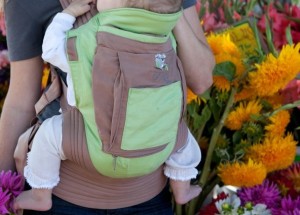




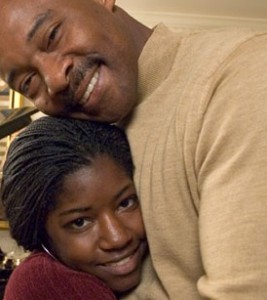




 Parenting – A Much Better Way » SIDS, Cribs and Cosleeping » Print
Parenting – A Much Better Way » SIDS, Cribs and Cosleeping » Print
 Breastfeeding Answers Made Simple – Breastfeeding Reporter – Unintended Consequences
Breastfeeding Answers Made Simple – Breastfeeding Reporter – Unintended Consequences
 My Date With Dr. Ferber
My Date With Dr. Ferber How They Do It In… Japan
How They Do It In… Japan








